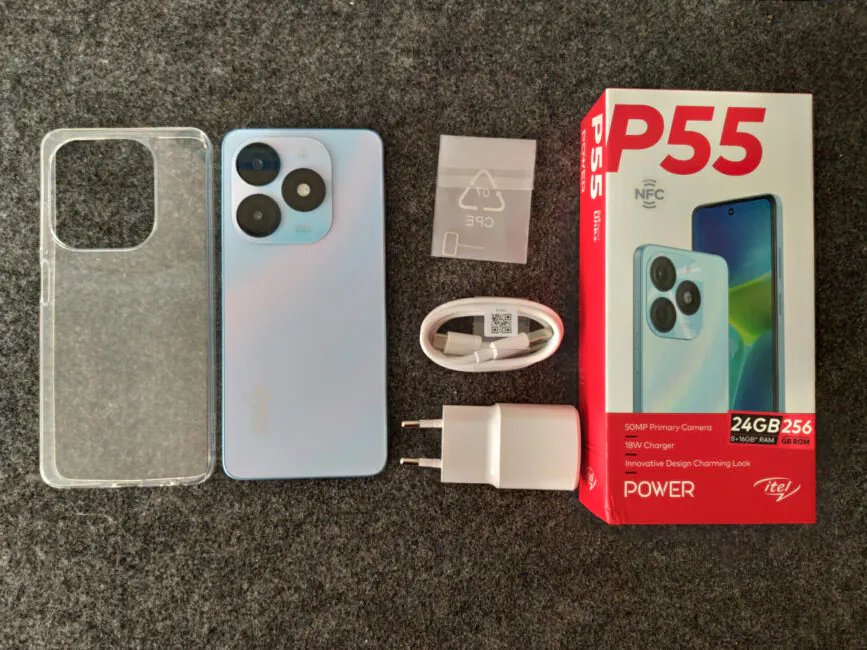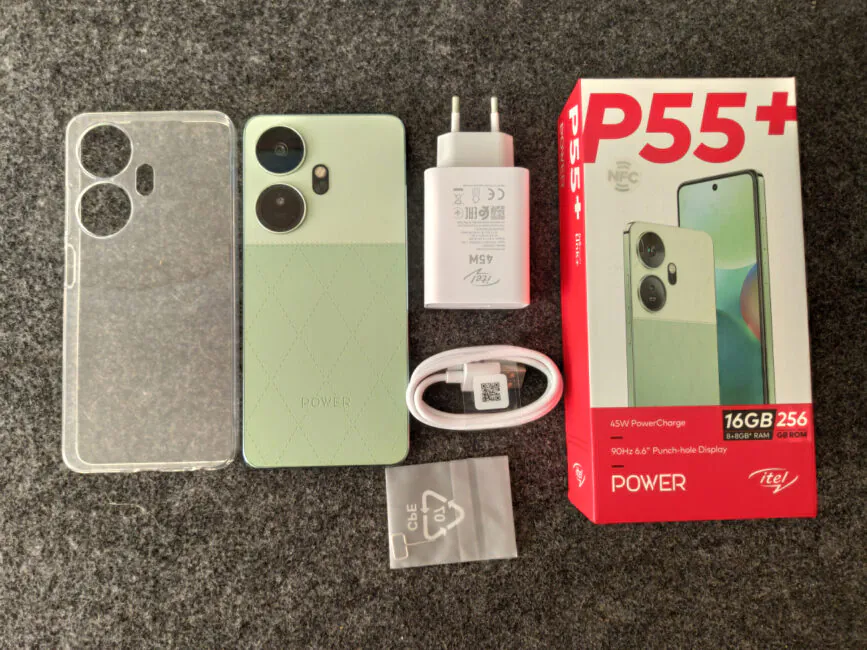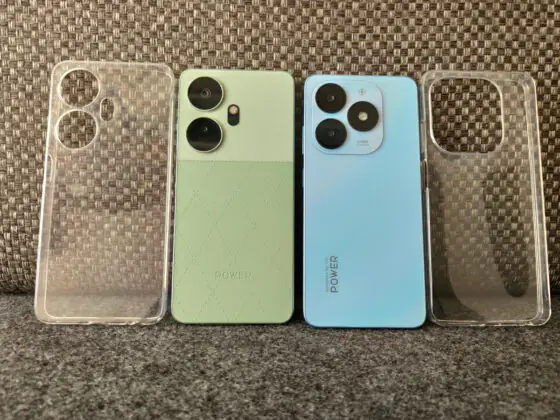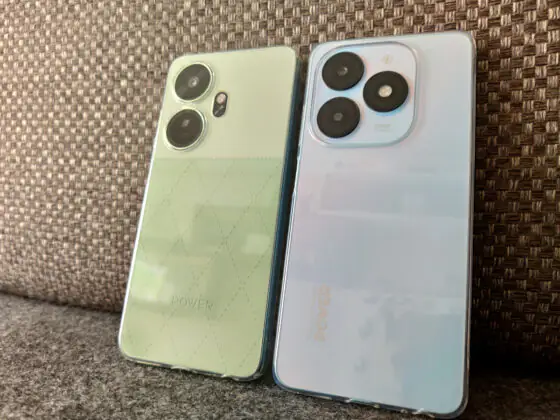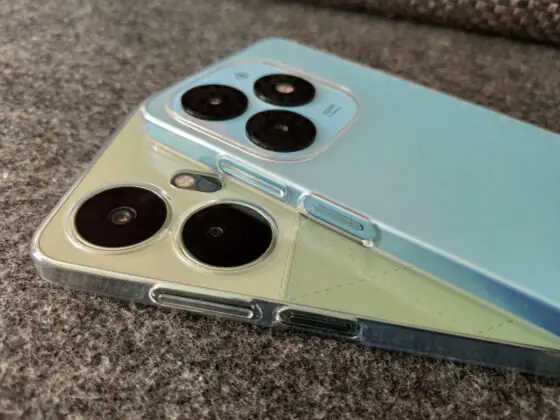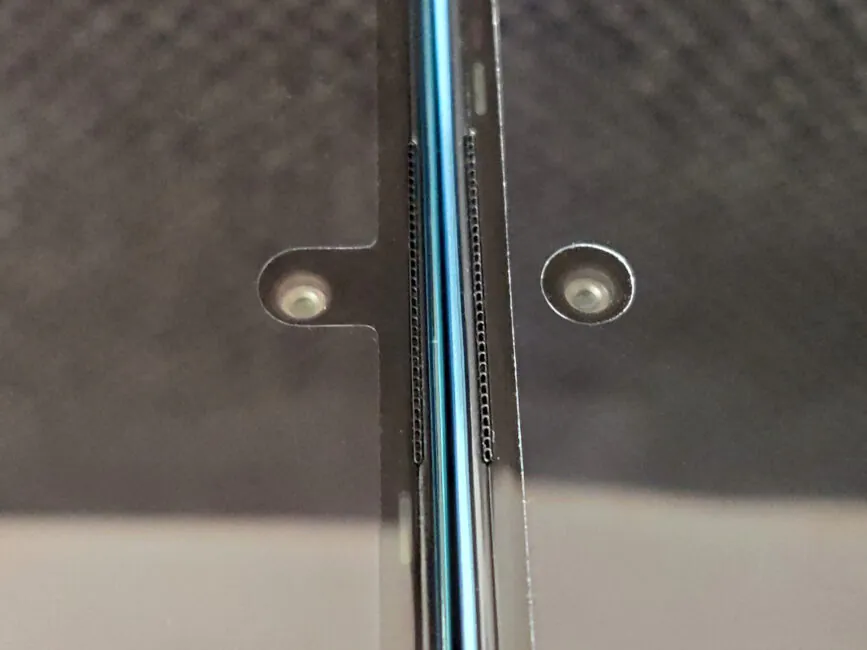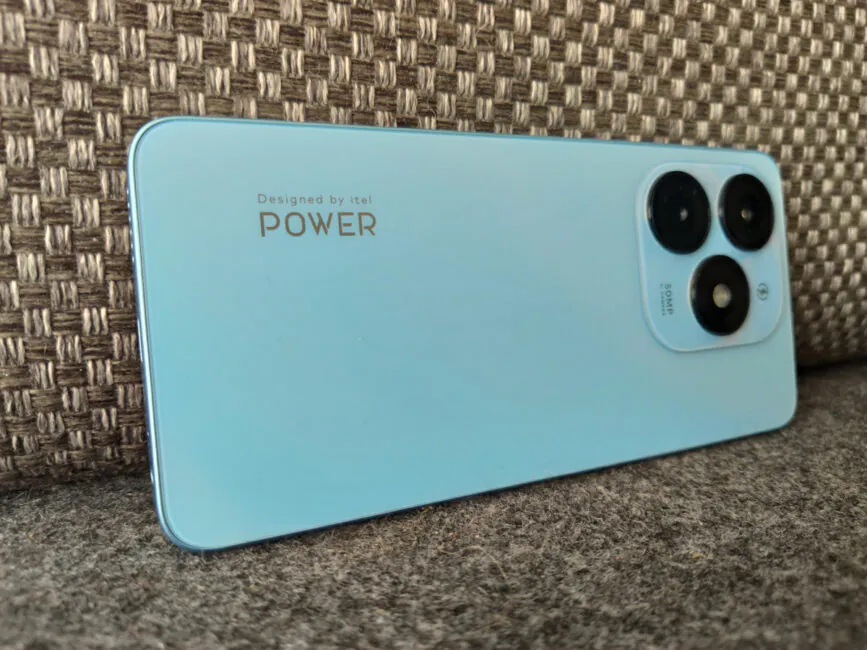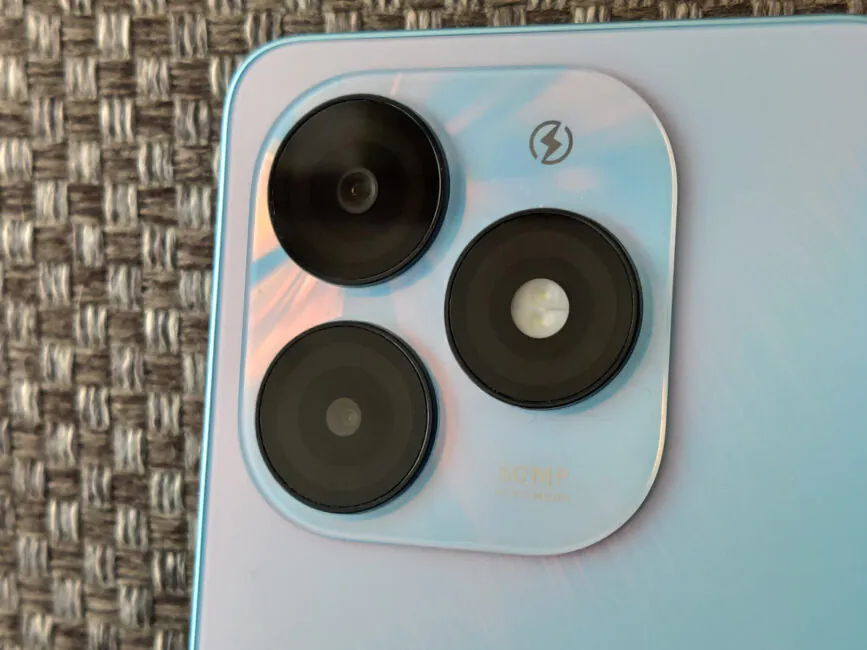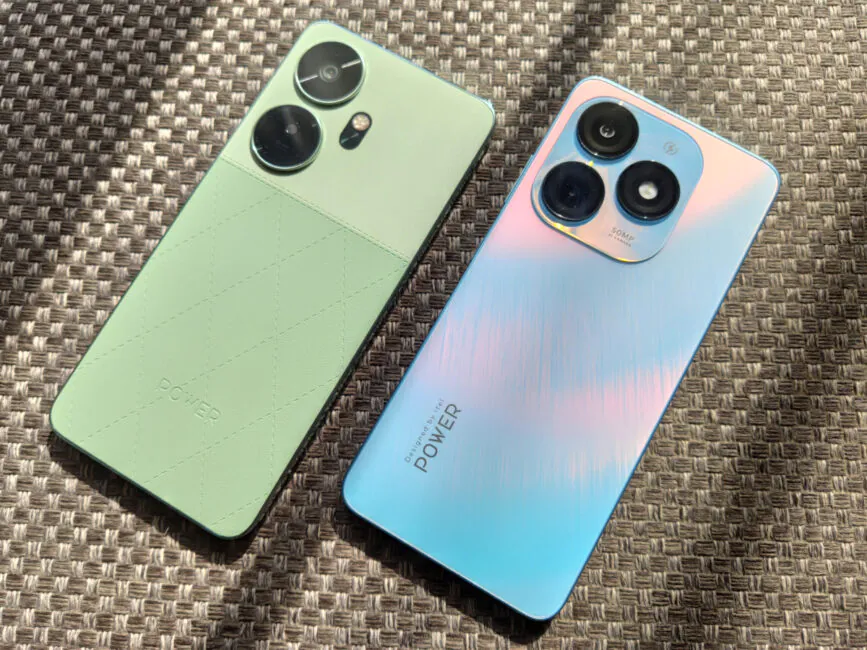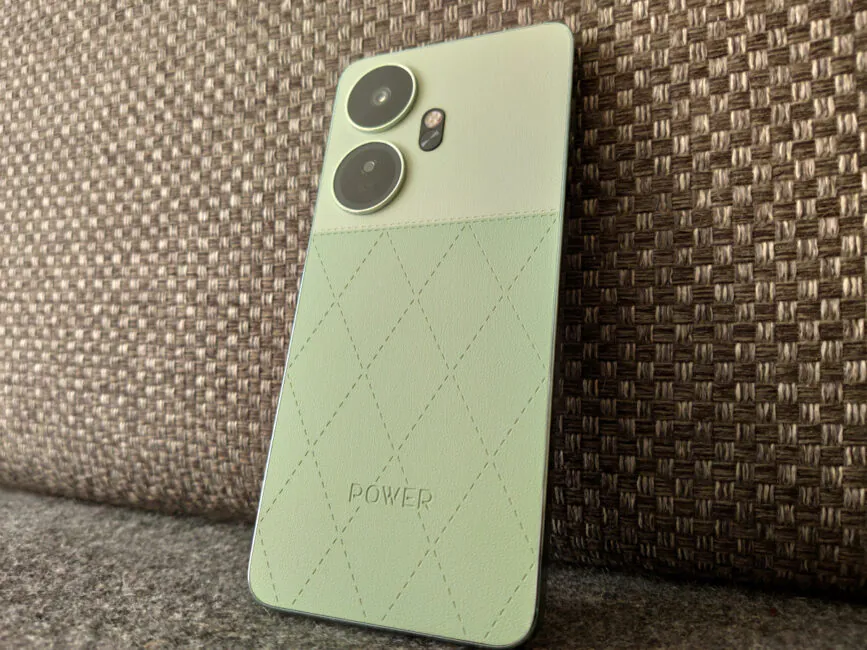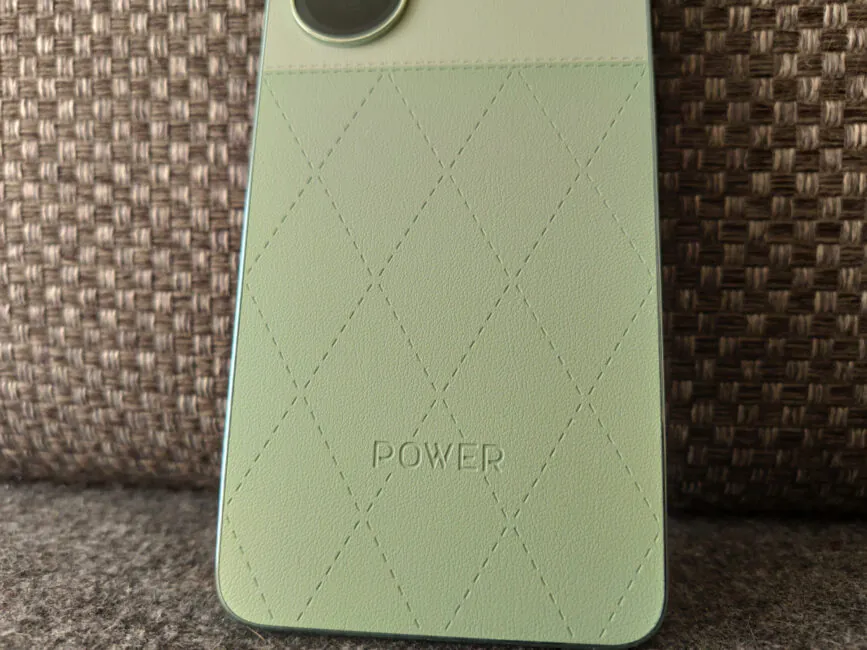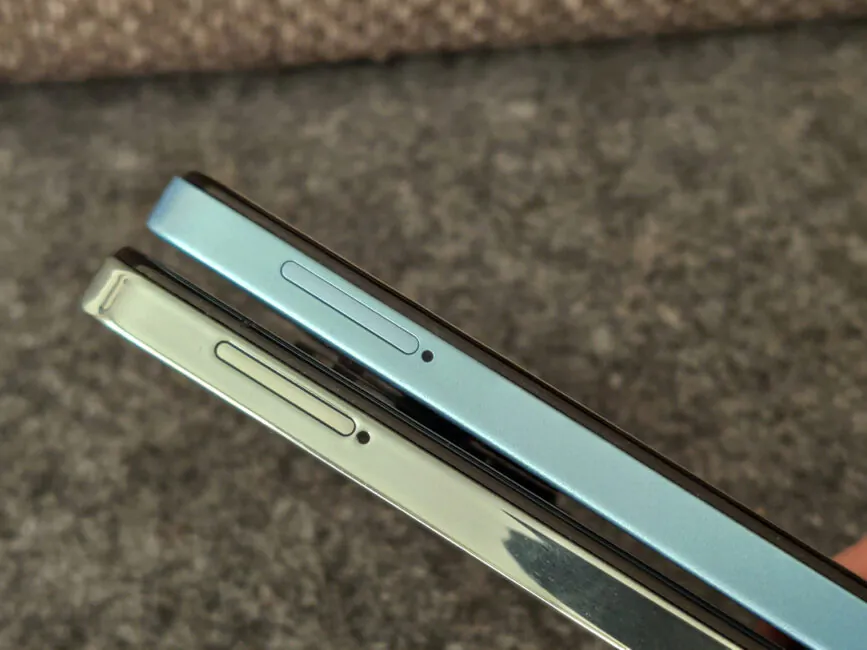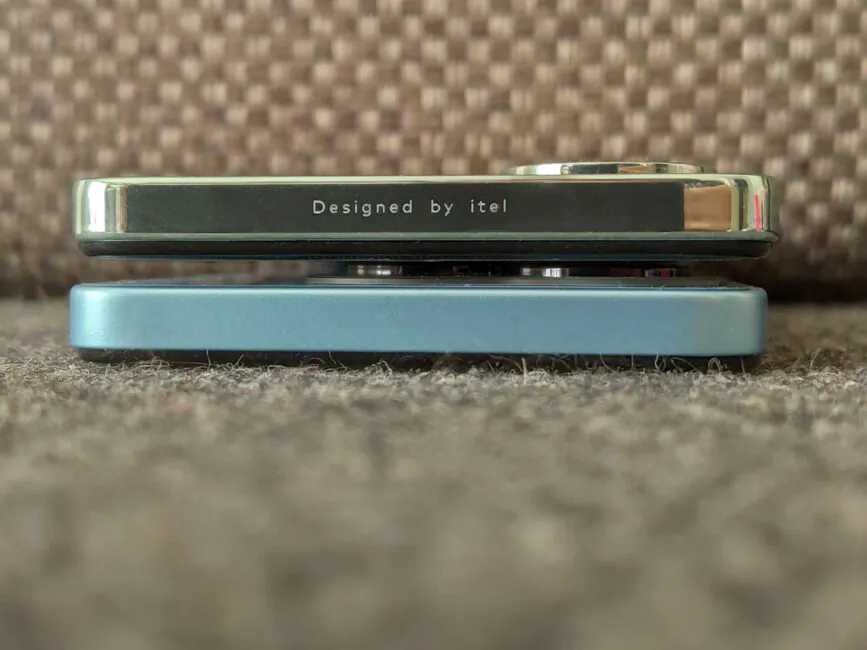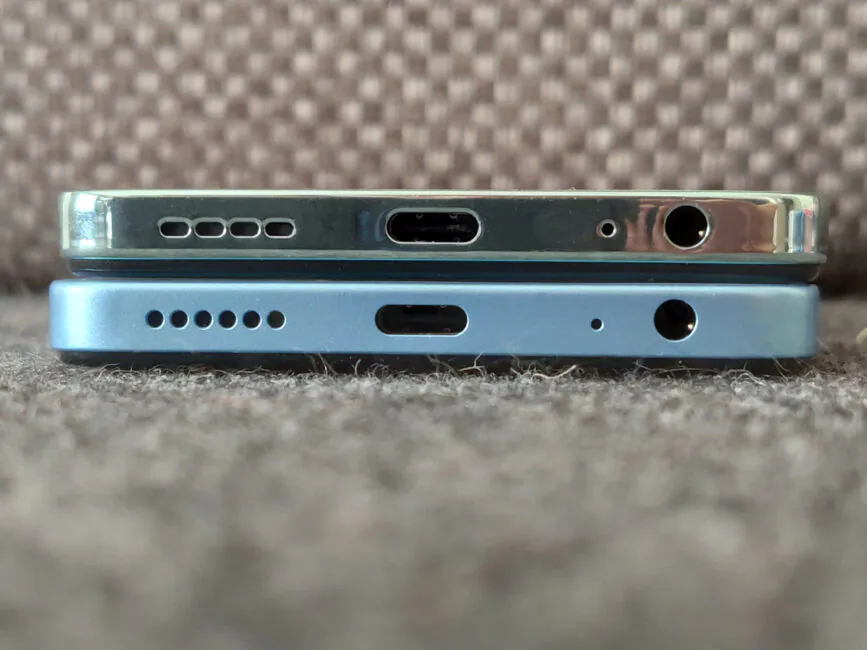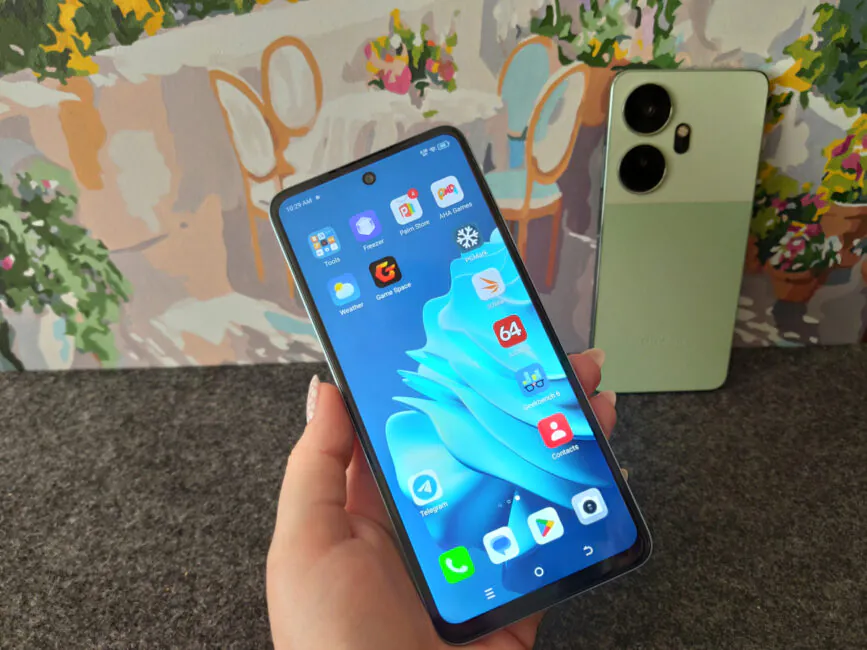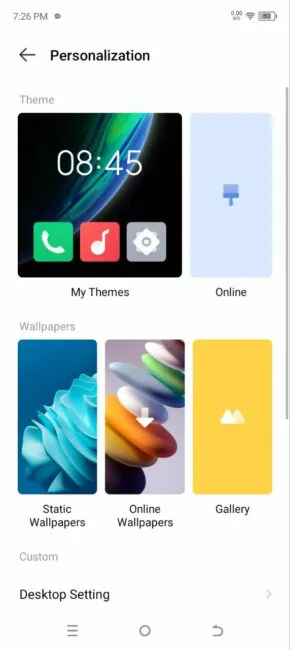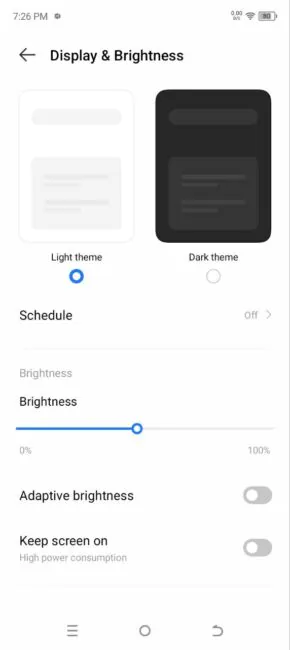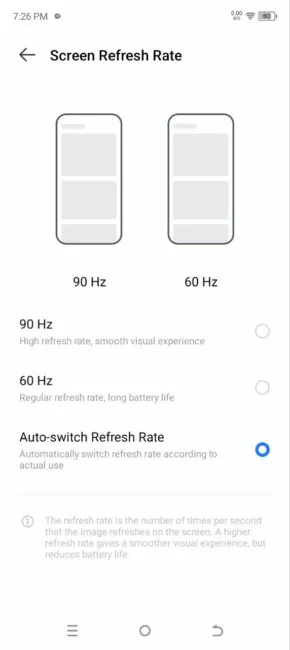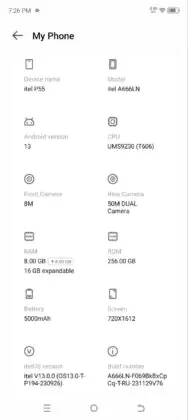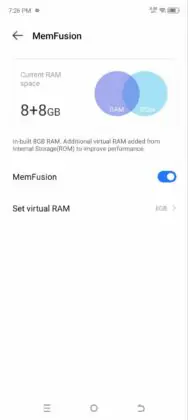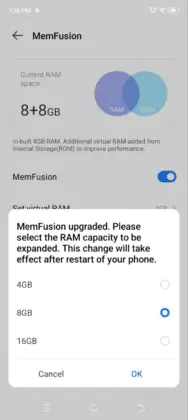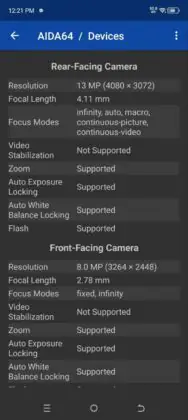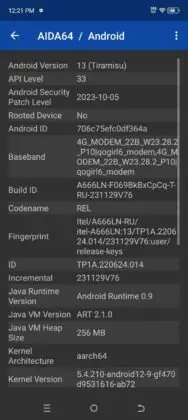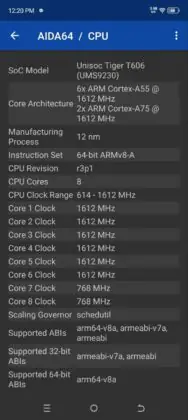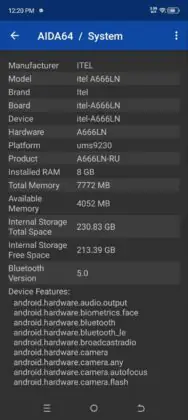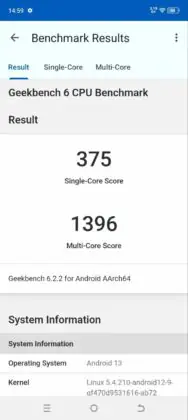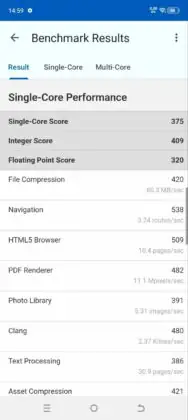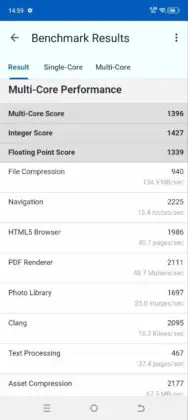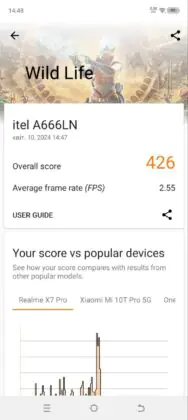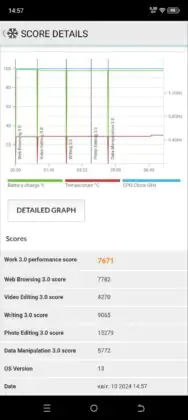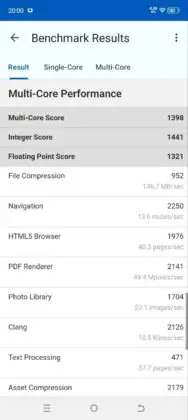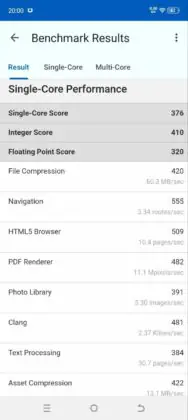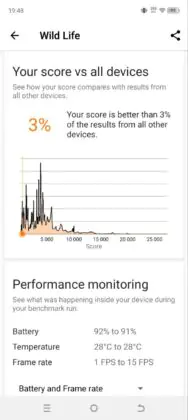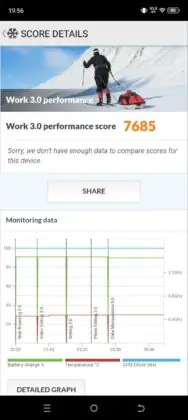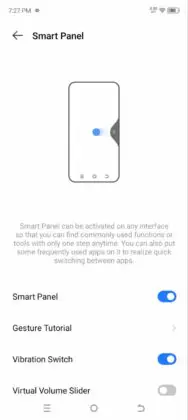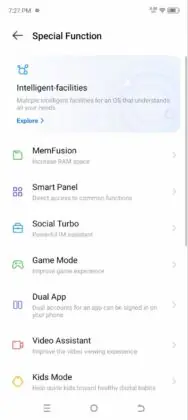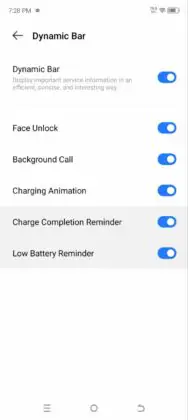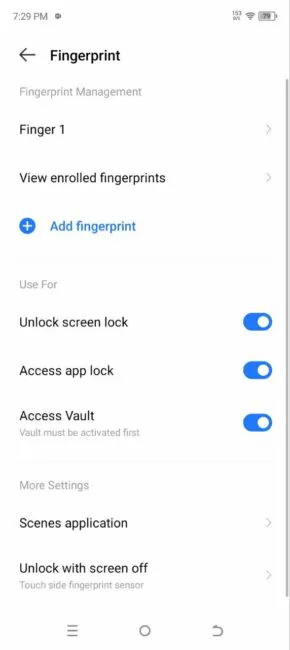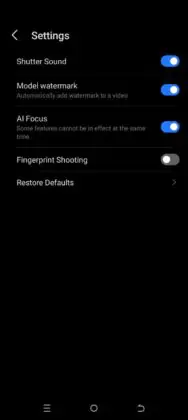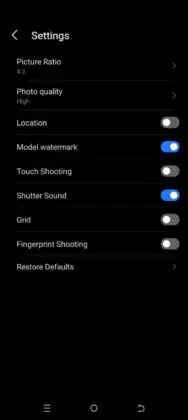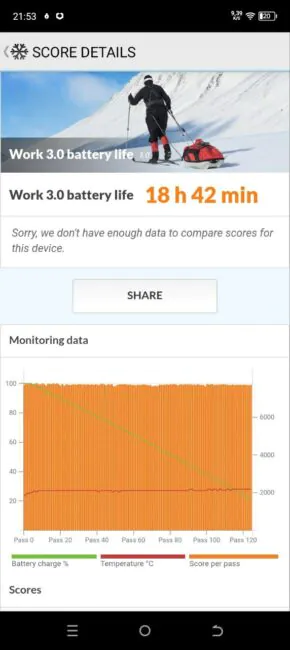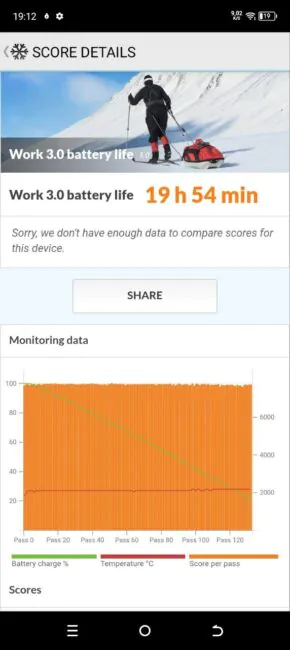© ROOT-NATION.com - Use of content is permitted with a backlink.
Today, the Itel brand isn’t very well-known. However, it is part of the Transsion holdings, which also own familiar brands like Tecno and Infinix. This could mean that Itel devices offer modern technology at a fairly pleasant price point. Or not? In the review of the Itel P55 and P55+ smartphones, we’ll find out.
Both models have nearly identical specifications, differing only in design, charging power, and virtual RAM capacity.
Read alsо:
- tel S23 Plus Smartphone Review: Affordability and Elegance
- TECNO SPARK 10 Pro review: an inexpensive smartphone with a large screen
Itel P55 and P55+ specifications
- Display: IPS, 6.6″, 90Hz, HD+ (1612×720), 267 ppi
- Processor: Unisoc Tiger T606, 8 cores, 6×Cortex-A55 (1.6GHz) + 2×Cortex-A75 (1.6GHz), 12nm
- GPU: ARM Mali-G57
- Permanent memory: 256GB
- RAM: 8GB (P55: +16GB ROM; P55+: +8GB ROM)
- MicroSD support: up to 1TB
- Slot: triple slot, SIM + SIM + microSD
- Wireless networks: Wi-Fi 5, Bluetooth 5.0, NFC, GPS, Galileo, GLONASS
- Main camera: 50 MP (Full HD shooting at 30 fps) + additional sensor
- Front camera: 8 MP, there is a flash
- Battery: 5000 mAh, charging power Itel P55 – 18W; Itel P55+ – 45W
- OS: Android 13 with ItelOS 13.0 shell
Smartphone price
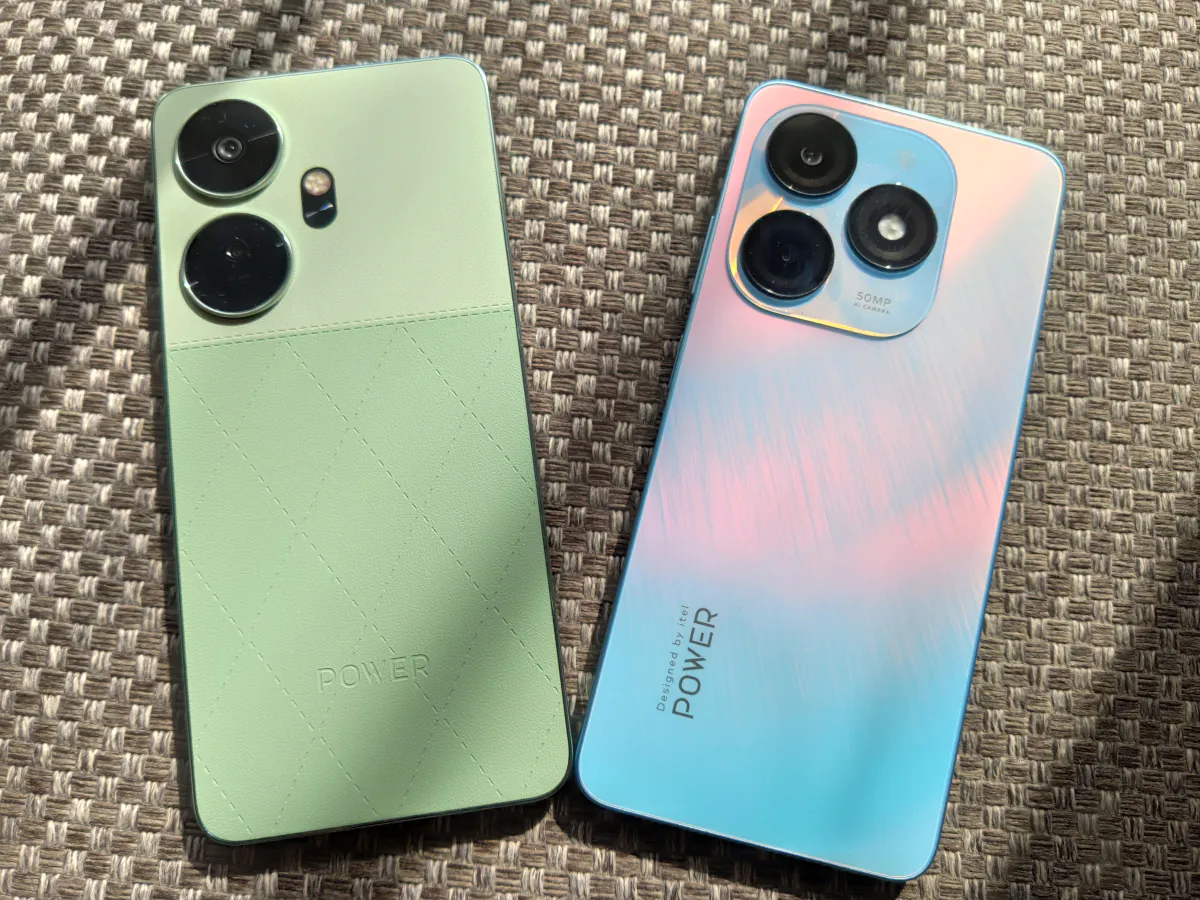
While we wait for the Itel P55 and P55+ to become available, let’s look at the prices on the official Itel store on AliExpress. Here, the base P55 model with 8/256 GB configuration will cost just over about $125. The P55+ version is slightly more expensive, at approximately $135. These are very affordable devices indeed. But what exactly do they offer to the user?
Package contents
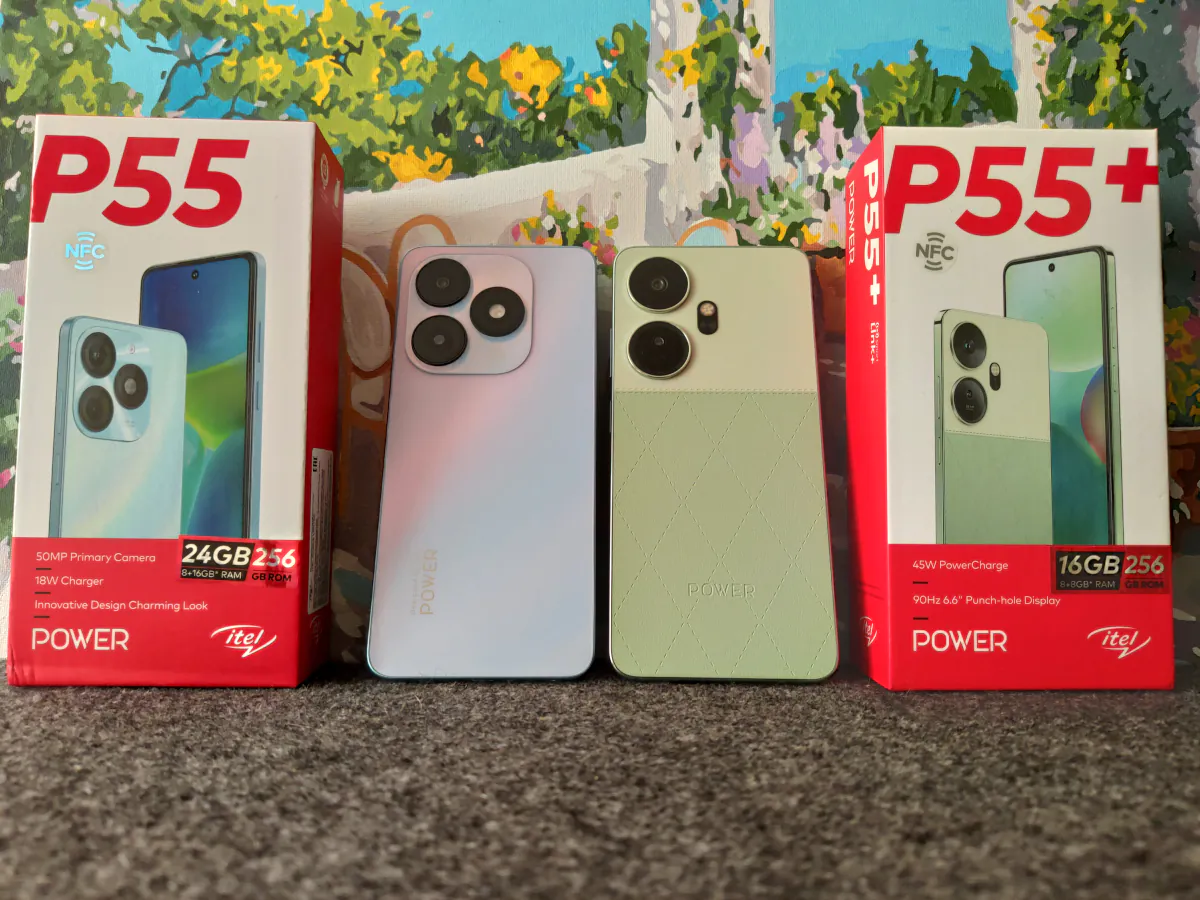 Both devices arrived in attractive red-and-white boxes. As usual, each model and its name are depicted on the front, along with the key characteristics of the smartphones.
Both devices arrived in attractive red-and-white boxes. As usual, each model and its name are depicted on the front, along with the key characteristics of the smartphones.
The contents are also identical: inside, there’s the device itself with a screen protector, accompanying documentation, a charging cable, a SIM card tray ejector pin, basic silicone bumpers, as well as charging adapters.
То, что чехлы имеют разную форму, это понятно – в моделях разные блоки камер. Но отличаются не только они, но и ЗУ. Так, в стандартном Itel P55 зарядка на 18 Вт, а в модели Plus – на 45 Вт.
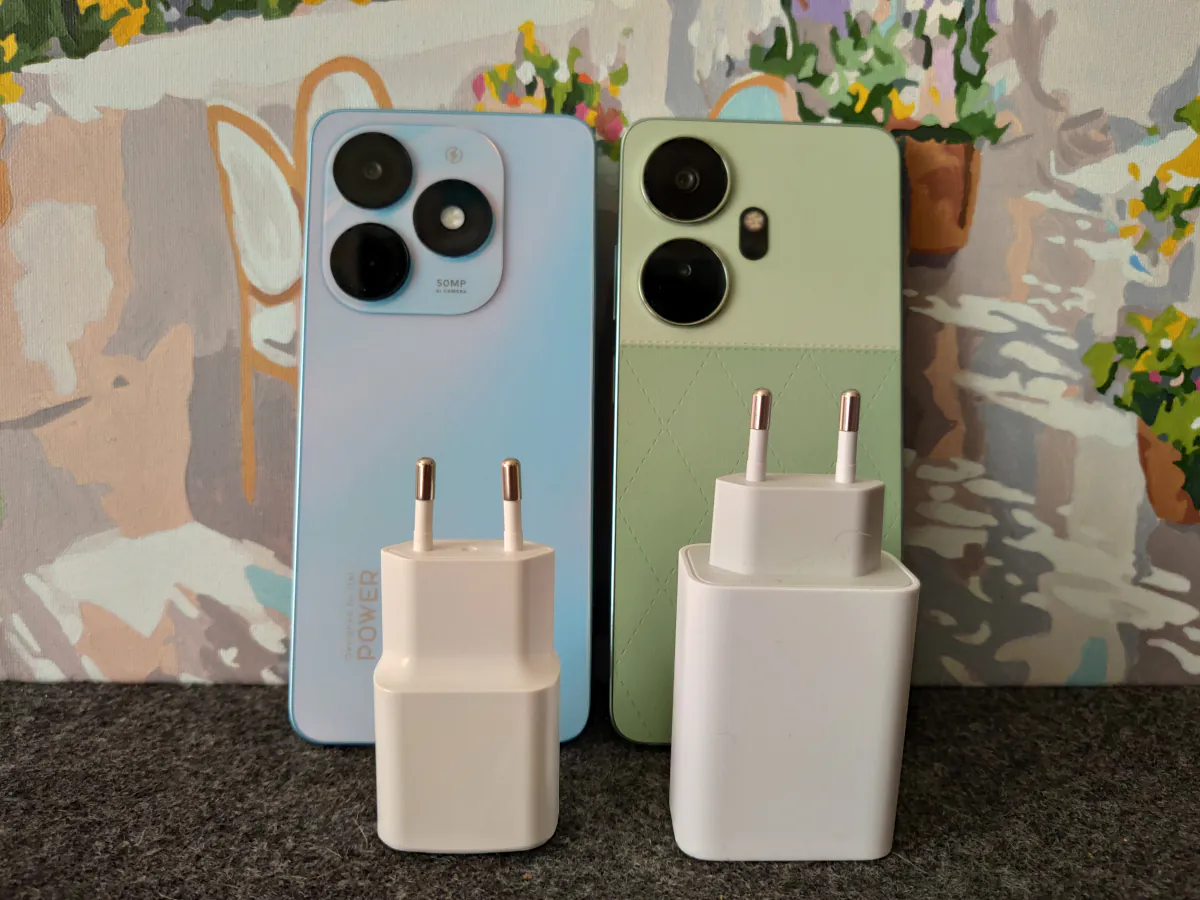 One more small difference lies in the protective film. Specifically, in the cutout for the front camera. In the Itel P55, it’s round, matching the shape of the camera module, while in the Itel P55 Plus, it’s in the shape of a U.
One more small difference lies in the protective film. Specifically, in the cutout for the front camera. In the Itel P55, it’s round, matching the shape of the camera module, while in the Itel P55 Plus, it’s in the shape of a U.
By the way, in these photos, to the right of the earpiece, you can also see the flash windows for the front cameras.
Read alsо:
- Infinix HOT 40 Smartphone Review: Is it Really “Hot”?
- Infinix HOT 30i smartphone review: the smart choice
Design and materials
I wouldn’t say that the Itel P55 and Itel P55+ are design twins, but they are definitely siblings. Let’s start with the fact that both smartphones have identical dimensions, materials, and the same layout of elements. They differ mainly in the camera module and the design of the back cover. A small spoiler – the P55+ looks more interesting, but let’s discuss everything in order.
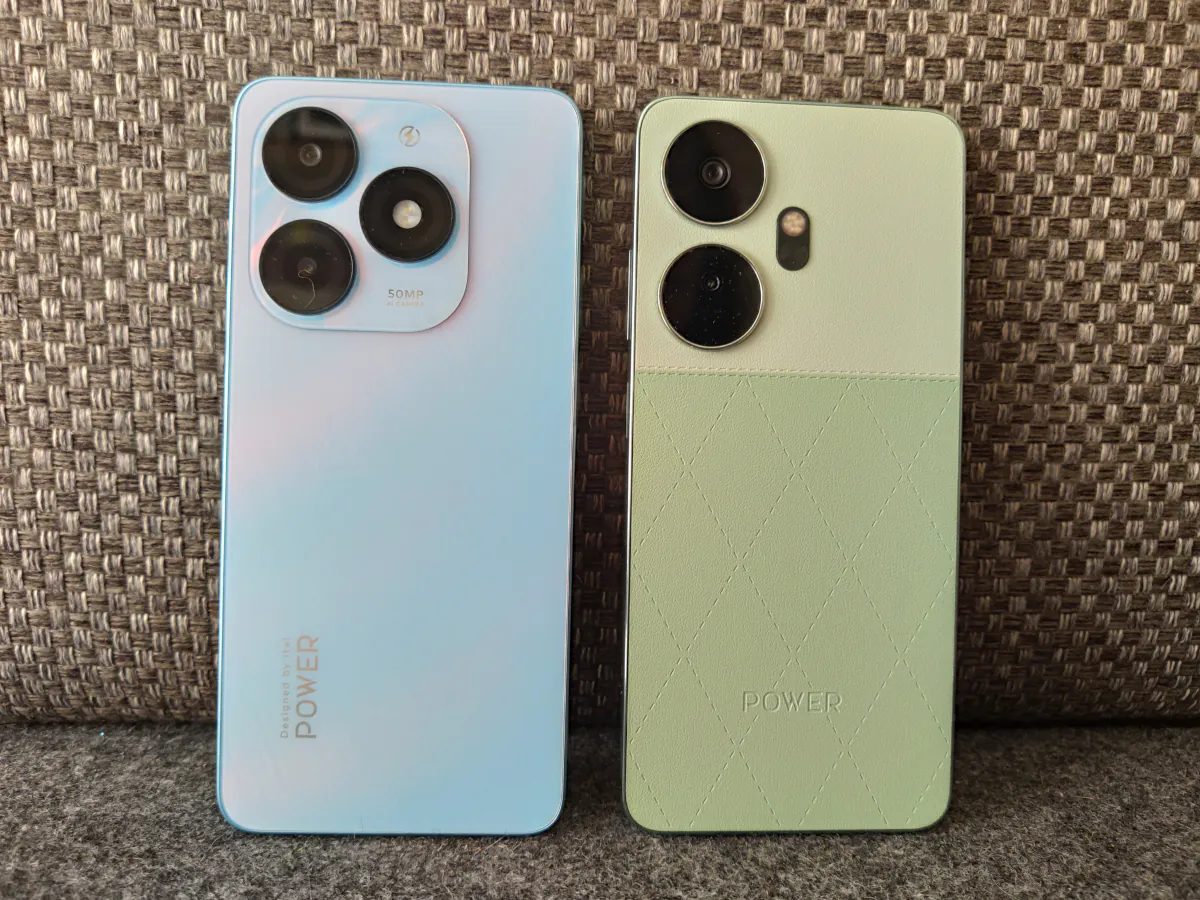 Let’s start getting acquainted with the base P55. It arrived for review in the Aurora Blue color (it’s also available in black, gold, and a slightly lighter blue). With its matte texture, the body showcases a diagonal “polishing” effect, as well as a gradient color scheme. Depending on the viewing angle, it shifts from blue to pink, somewhat resembling the sky during sunset. The edges of the smartphone are also blue and matte, made of plastic, just like the entire body.
Let’s start getting acquainted with the base P55. It arrived for review in the Aurora Blue color (it’s also available in black, gold, and a slightly lighter blue). With its matte texture, the body showcases a diagonal “polishing” effect, as well as a gradient color scheme. Depending on the viewing angle, it shifts from blue to pink, somewhat resembling the sky during sunset. The edges of the smartphone are also blue and matte, made of plastic, just like the entire body.
The camera block on the Itel P55 is quite substantial and is placed on a low glossy “pedestal.” There are two modules with a large frame, but the flash is positioned within the same frame. Therefore, at first glance, it might seem like there are three cameras here. Above the flash, there is a lightning bolt icon (it’s unclear what it symbolizes in this case), and below it, you can see the specifications of the main camera module – 50 MP AI Camera. Below, in the bottom left corner, there’s the inscription “Designed by Itel Power.”
Now let’s take a look at the Itel P55+. It comes in the color Royal Green – a noble pistachio-green shade (there’s also a black and a violet version). However, its appeal lies not only in the color but also in the texture, as it features a back cover made of attractive and pleasant-to-touch faux leather.
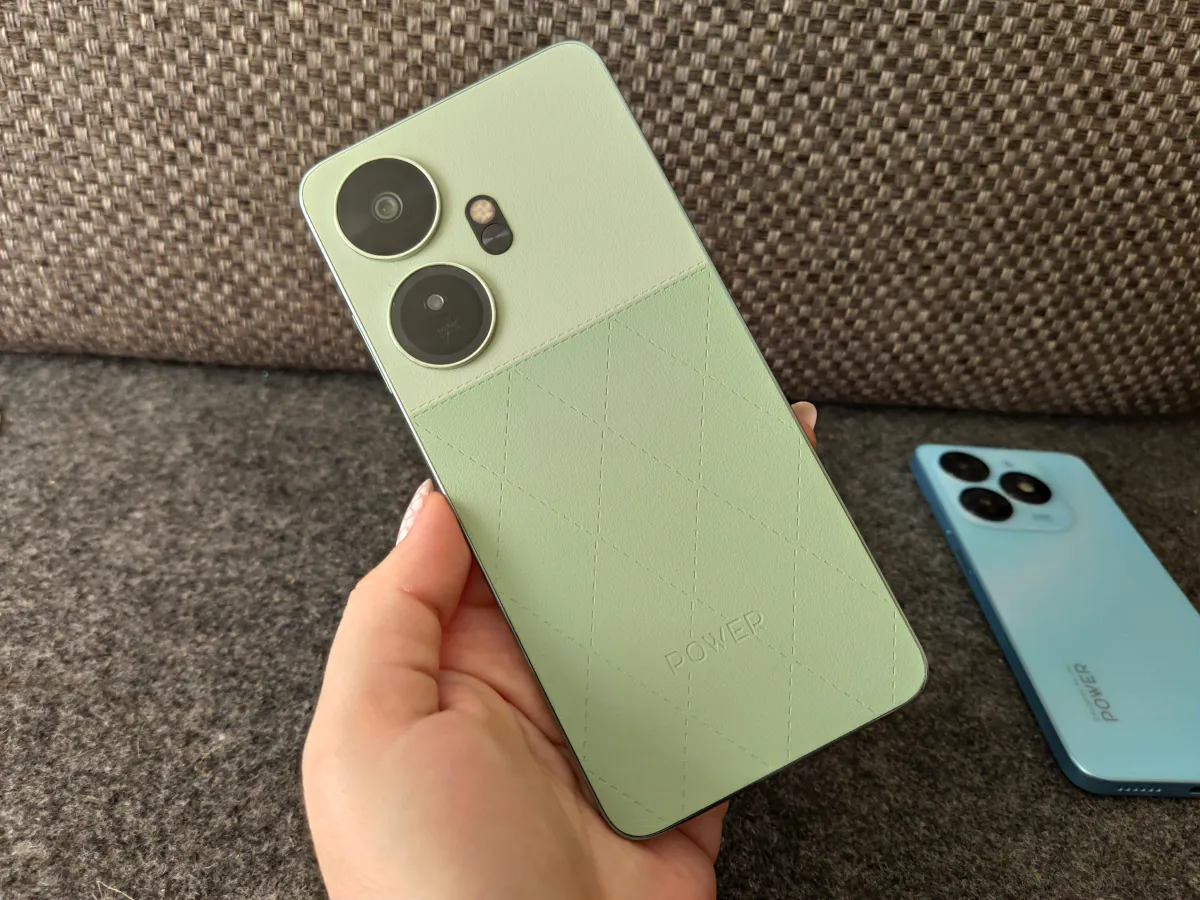 It’s two-toned and completely covers the entire back of the device. At the color junction, you can see an imitation of stitching, and there’s also a similar “stitching” pattern at the bottom in the form of diamonds. Additionally, there’s an embossed “Power” inscription on the faux leather. While the edges are plastic, they have a mirror-like glossy texture that contrasts beautifully with the matte two-tone faux leather background.
It’s two-toned and completely covers the entire back of the device. At the color junction, you can see an imitation of stitching, and there’s also a similar “stitching” pattern at the bottom in the form of diamonds. Additionally, there’s an embossed “Power” inscription on the faux leather. While the edges are plastic, they have a mirror-like glossy texture that contrasts beautifully with the matte two-tone faux leather background.
Unlike the base P55, the P55+ model doesn’t have a “pedestal” for the camera block. The modules are just as substantial, with an edge to match the color of the edges, but here there are two – one for each sensor. On the bottom one, you can see a similar inscription to the previous model – 50 MP Ultra Cam. The flash is positioned slightly to the right of both modules.
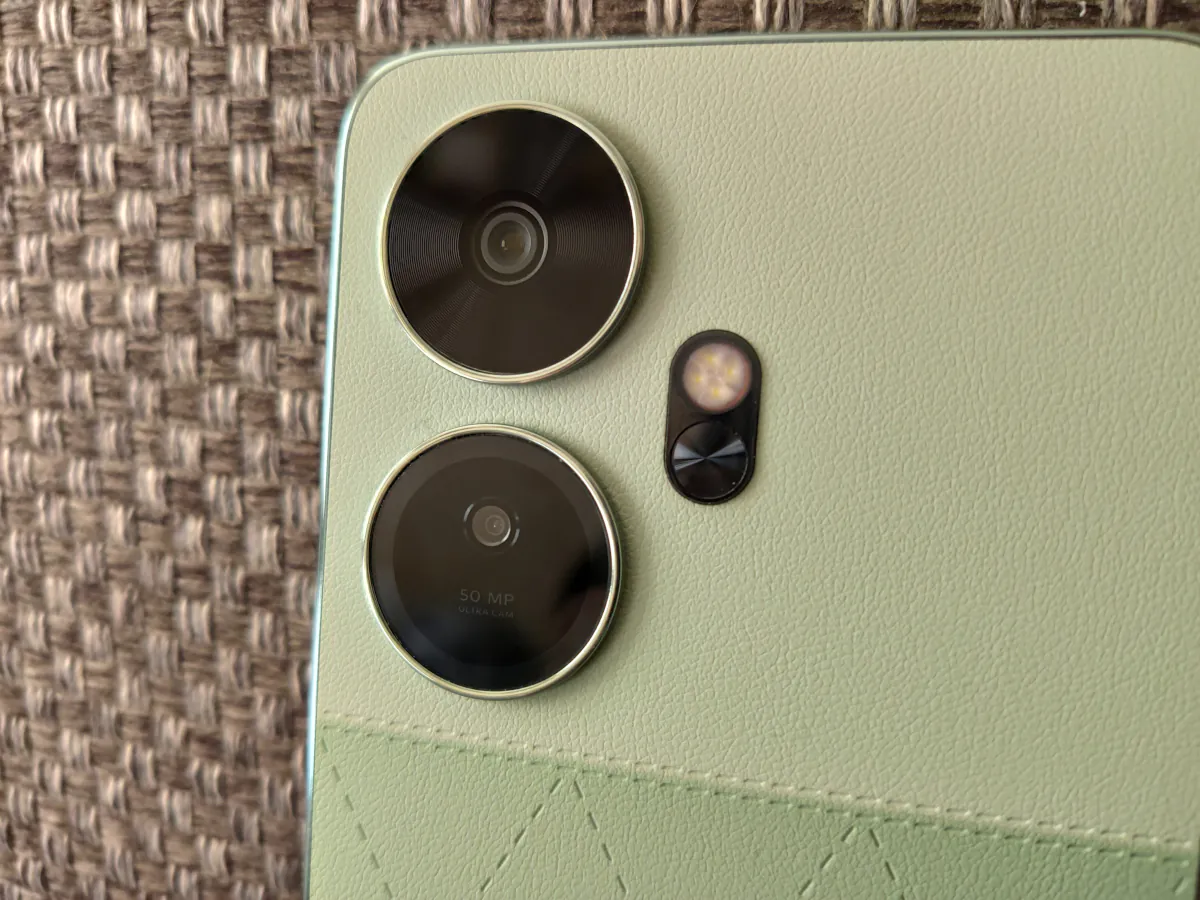
Overall, both smartphones look nice, attractive, and they don’t gather fingerprints. But if I were asked which one I visually prefer, I would without hesitation choose the Itel P55+. After all, materials matter a lot, and the device looks more interesting and expensive than its actual cost.
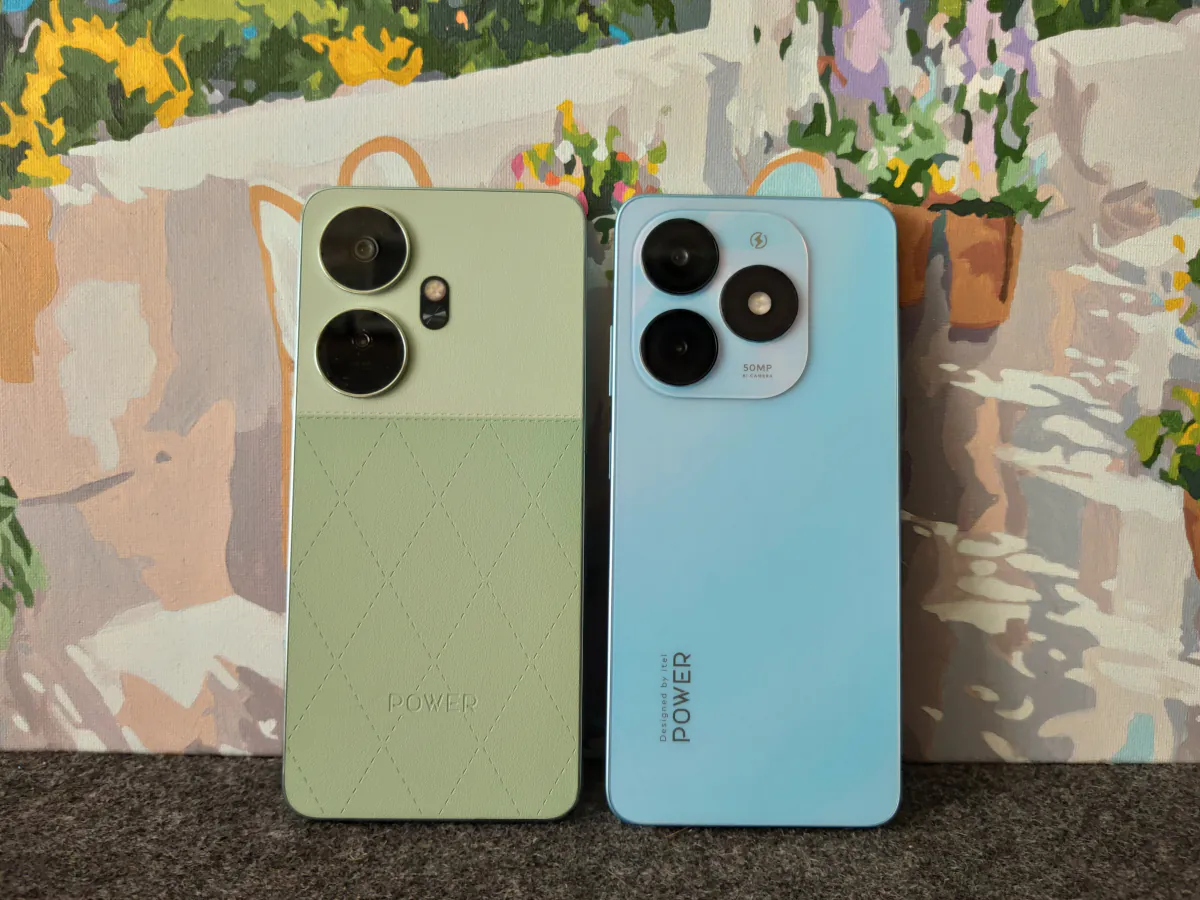
Layout of elements
As mentioned earlier, all control elements in both models are located identically. So, on the left side, you can see the slot for two SIM cards and a microSD card.
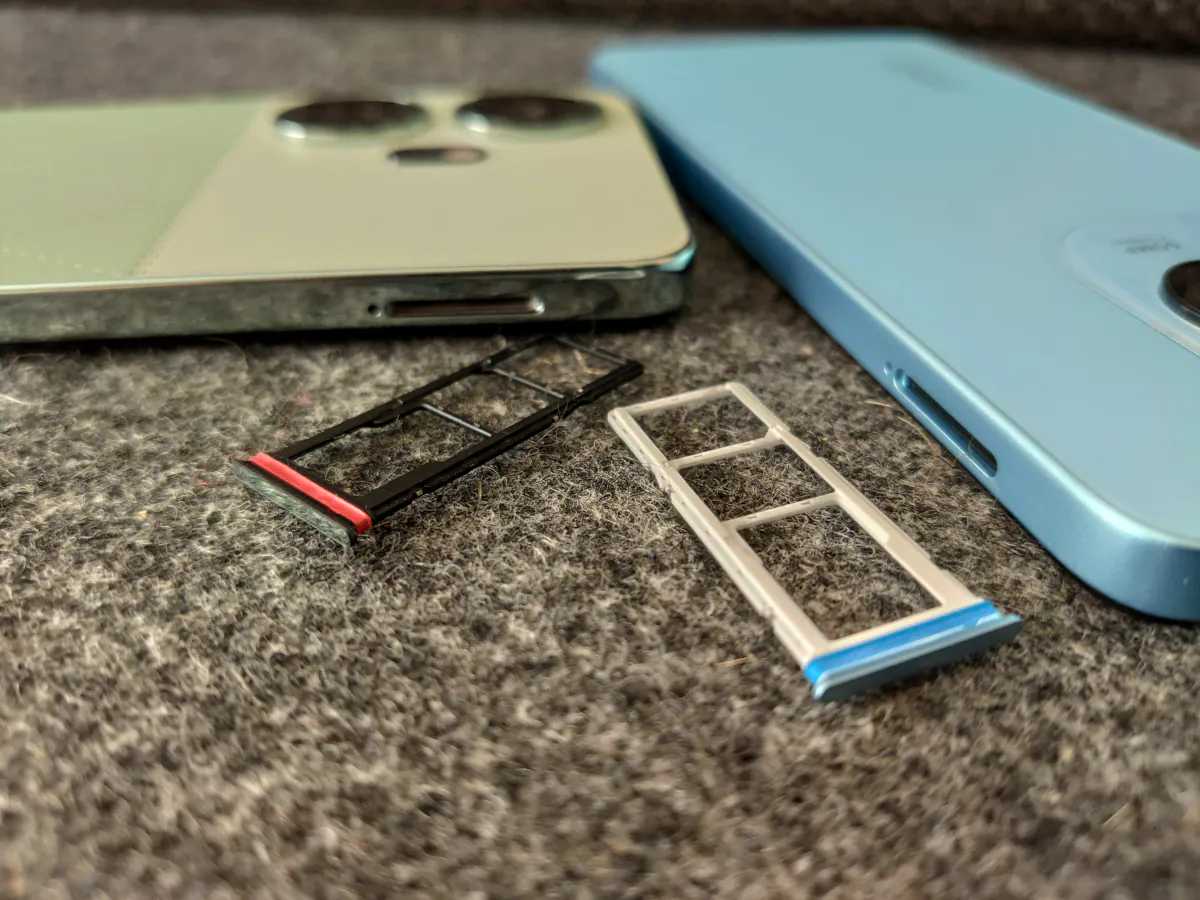 On the right side, there are the volume control buttons and the power button, which is combined with the fingerprint scanner.
On the right side, there are the volume control buttons and the power button, which is combined with the fingerprint scanner.
The top edge is left empty (except for the barely noticeable inscription “Designed by Itel” on the P55+), and at the bottom, there are the 3.5mm headphone jack, microphone hole, USB Type-C port, and the main speaker.
Itel P55 and P55+ Ergonomics
There’s nothing to complain about in terms of usability. Both smartphones confidently fit in the hand and don’t slip even without cases. The power button with the fingerprint scanner is conveniently placed and easily accessible under the thumb when holding the device in the right hand. Yes, using a 6.6-inch smartphone with one hand isn’t particularly comfortable (at least in my case), but if needed, you can always enable one-handed mode. Overall, the ergonomics of the Itel P55 and P55+ are on point.
Read alsо:
- Infinix GT 10 Pro smartphone review: for gaming and beyond
- TECNO POVA 5 review: a stylish budget gaming device
Displays
The screens in both models are absolutely identical. They feature 6.6-inch HD+ (1612×720) IPS panels with a pixel density of 267 ppi and a refresh rate of up to 90 Hz. Like in most smartphones, the refresh rate can be either fixed (60 Hz or 90 Hz) or adaptive. In the adaptive mode, the refresh rate adjusts automatically depending on the type of content.
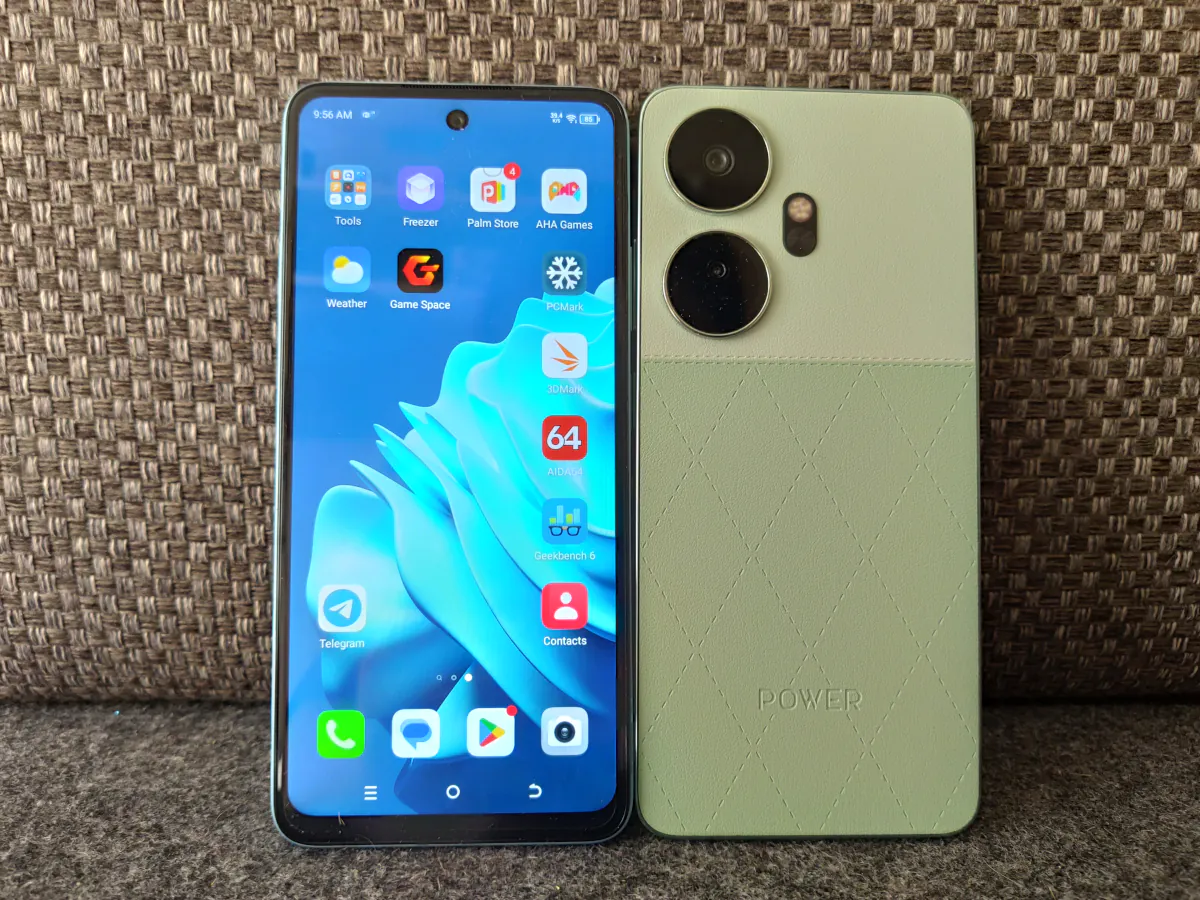
What can be said about the screens of the P55 and P55+? They have pleasant color reproduction, good brightness levels, and despite the modest resolution, any content, be it images or text, is perceived excellently. Graininess in the picture is only noticeable in some cases. For example, in the Google services folder, where the icons of popular apps appear more diamond-shaped than round. And this is the only place where I noticed graininess during testing.
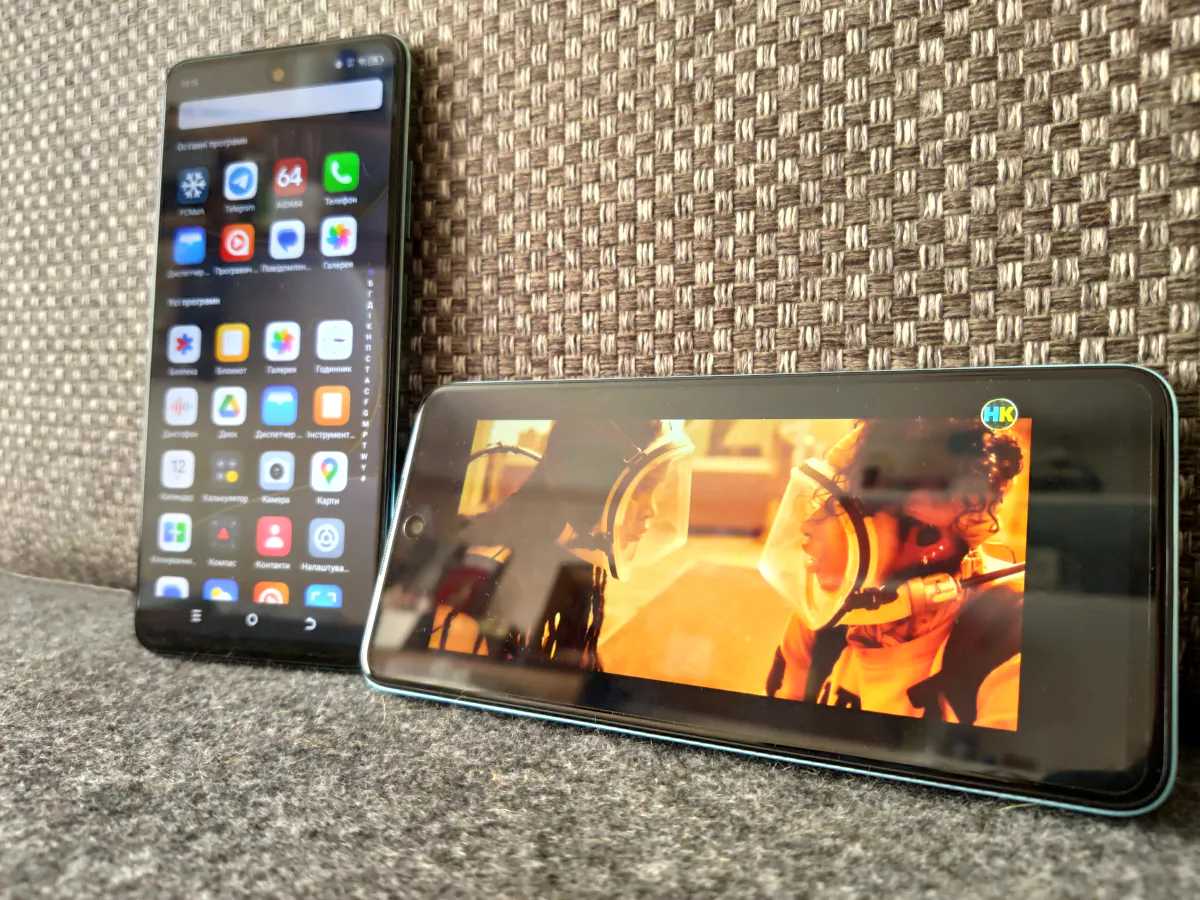 If you delve into the settings, you’ll find a basic set of tools: dark theme, auto-brightness, eye protection (unfortunately, without scheduling), and numerous options for customizing the home screen. However, the ability to adjust color display or temperature is not provided, although, frankly speaking, there’s not much need for it – the smartphones perform well in this regard.
If you delve into the settings, you’ll find a basic set of tools: dark theme, auto-brightness, eye protection (unfortunately, without scheduling), and numerous options for customizing the home screen. However, the ability to adjust color display or temperature is not provided, although, frankly speaking, there’s not much need for it – the smartphones perform well in this regard.
Though the specifications of the screens are identical, in comparison, the P55+ appears slightly brighter, enhancing contrast. Additionally, its display seems slightly warmer. In the Itel P55, the display appears somewhat grayer and less contrasty, but the difference is negligible.
Hardware and wireless connections
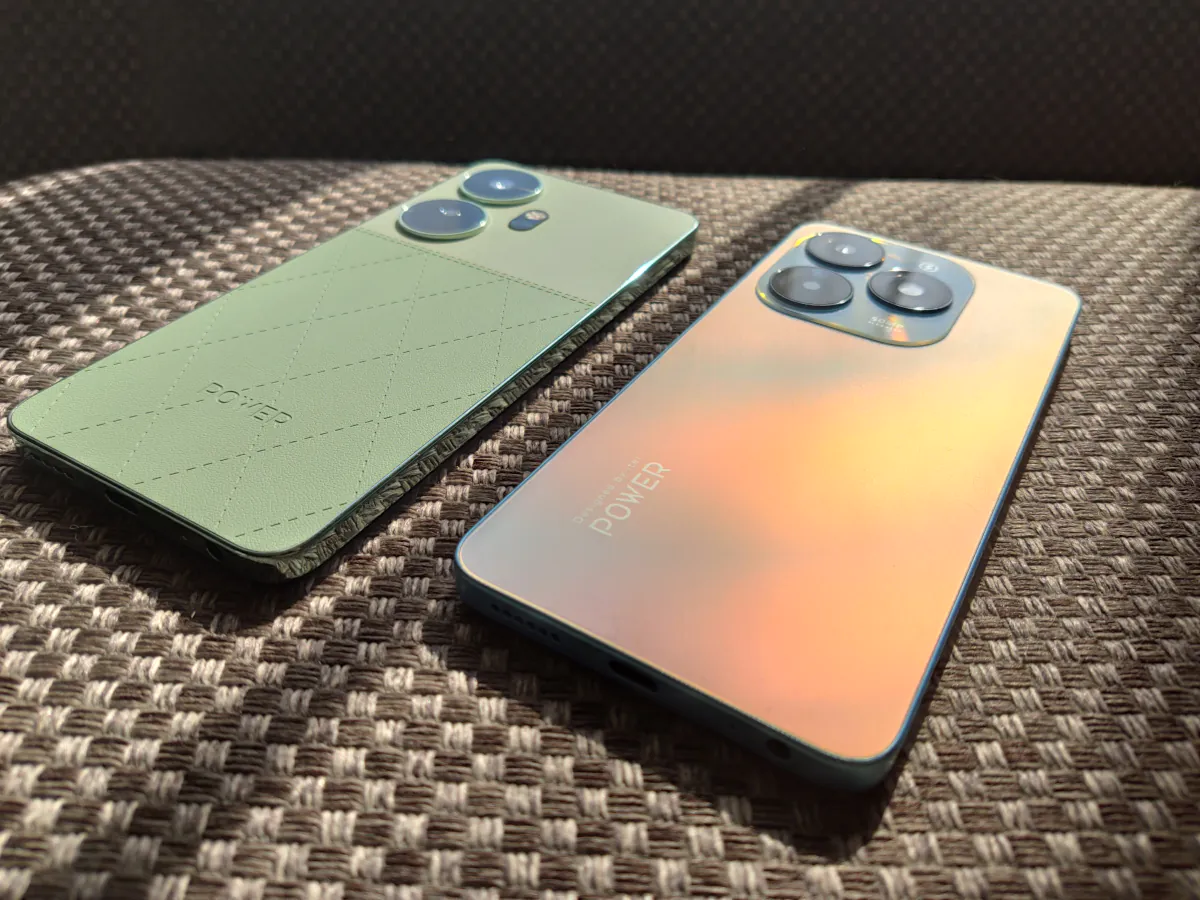 In terms of hardware, both models are also on par. They are powered by the 12nm 8-core Unisoc Tiger T606 chipset, consisting of two Cortex-A75 cores and six Cortex-A55 cores, all running at the same clock speed of 1.6 GHz. Graphics processing is handled by the ARM Mali-G57. Both smartphones arrived for review in the maximum configuration – 8 GB of RAM and 256 GB of internal storage. By the way, the Itel P55 and P55+ support memory cards up to 1 TB, as well as virtual RAM expansion. However, the volume of expansion differs: for the Itel P55+, it’s 8 GB, while for the regular P55, it’s the full 16 GB. Regarding wireless modules, both models feature Wi-Fi 5, Bluetooth 5.0, NFC, and location services.
In terms of hardware, both models are also on par. They are powered by the 12nm 8-core Unisoc Tiger T606 chipset, consisting of two Cortex-A75 cores and six Cortex-A55 cores, all running at the same clock speed of 1.6 GHz. Graphics processing is handled by the ARM Mali-G57. Both smartphones arrived for review in the maximum configuration – 8 GB of RAM and 256 GB of internal storage. By the way, the Itel P55 and P55+ support memory cards up to 1 TB, as well as virtual RAM expansion. However, the volume of expansion differs: for the Itel P55+, it’s 8 GB, while for the regular P55, it’s the full 16 GB. Regarding wireless modules, both models feature Wi-Fi 5, Bluetooth 5.0, NFC, and location services.
How do the smartphones perform? Despite the fact that they use a simple and not the latest chipset, both handle everyday tasks and multitasking admirably. I didn’t encounter any issues during my testing period. As for gaming, you can expect smooth performance with any casual and undemanding games, but don’t expect magic with more advanced 3D projects. Even in a short test with 3DMark Wild Life, both devices exhibited noticeable freezes and managed to achieve an average FPS below 3. Of course, you can try adjusting the graphics quality by lowering it to the minimum, but you understand. A budget smartphone won’t deliver top-notch gaming performance.
Below you can see the results of some popular synthetic tests. As you can see, in many of them, the devices are practically identical.
Itel P55:
Itel P55+:
Itel P55 and P55+ Software
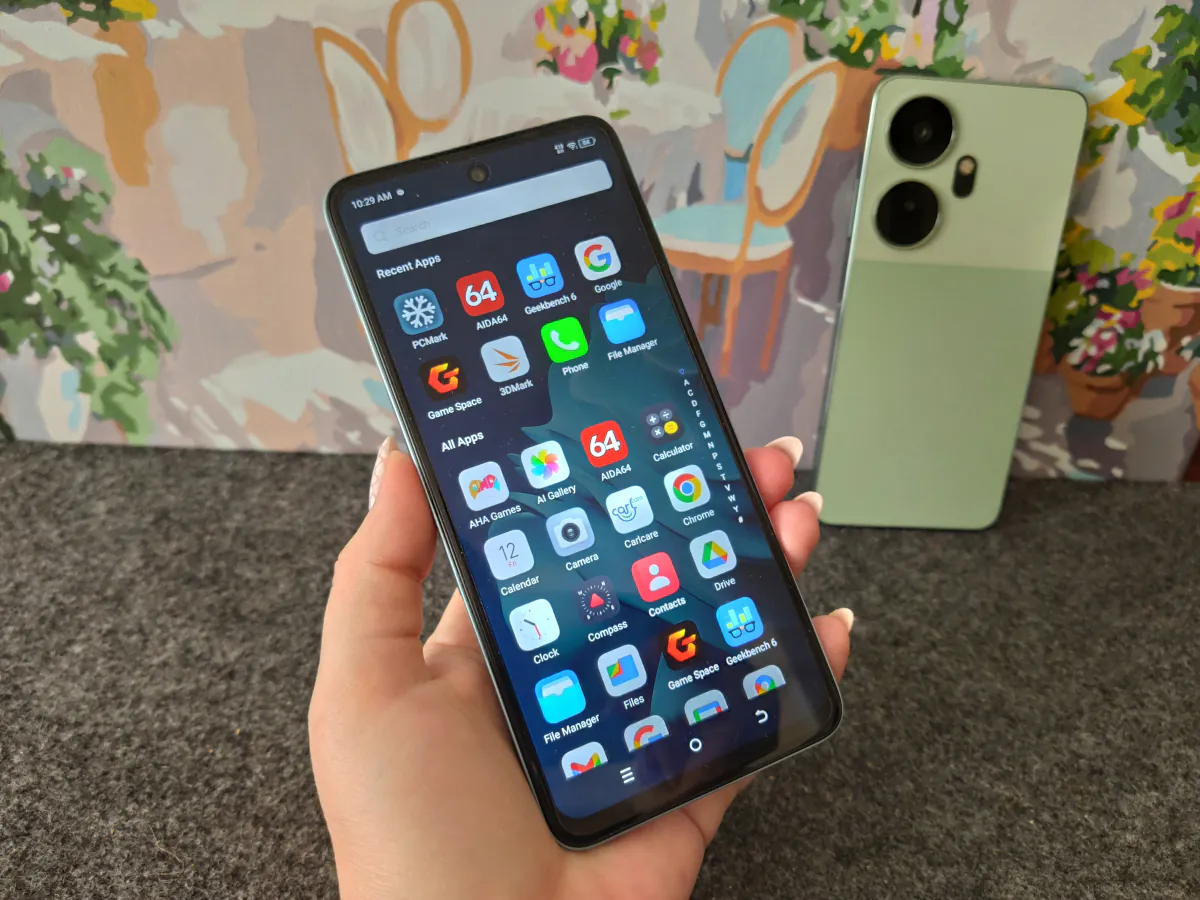 Both devices are powered by Android 13 with the ItelOS 13.0 interface. Overall, the functionality here is mostly basic, but there are a few interesting and relevant features. Firstly, there’s a smart panel (activated by swiping from any side and briefly holding in the middle of the screen), where the most commonly used apps are concentrated, and which can be customized to your liking. I like this feature in modern smartphones; my old one lacks it… And of course, the Itel P55 and P55+ are equipped with the trendy Dynamic Bar, which pops up during certain usage scenarios. For example, it activates when using face unlock, during an incoming call, when the battery is low, during charging, or when the battery reaches 100%.
Both devices are powered by Android 13 with the ItelOS 13.0 interface. Overall, the functionality here is mostly basic, but there are a few interesting and relevant features. Firstly, there’s a smart panel (activated by swiping from any side and briefly holding in the middle of the screen), where the most commonly used apps are concentrated, and which can be customized to your liking. I like this feature in modern smartphones; my old one lacks it… And of course, the Itel P55 and P55+ are equipped with the trendy Dynamic Bar, which pops up during certain usage scenarios. For example, it activates when using face unlock, during an incoming call, when the battery is low, during charging, or when the battery reaches 100%.
On the other hand, it’s pretty much the same as everywhere else. There are plenty of settings for personalization, a gaming mode, gesture and notification settings, and even a kind of privacy protection. There’s also an app for technical support, a proprietary center for syncing with other devices (headphones, TVs, routers, smartwatches, etc.), a proprietary app store called Palm Store, and simple games from AHA Games, a health and activity tracking app called My Health, and more. Overall, the system is quite convenient and easy to understand; even a child or an elderly person would have no trouble navigating it. It’s pleasing that there aren’t dozens of “junk” programs here.
Read alsо:
- Bigme B751C review: Finally, Affordable E-Reader With Color E Ink And Android
- POCO X6 5G Review: Future Bestseller?
Unlocking methods
The Itel P55 and P55+ are equipped with the standard set of unlocking methods – face and fingerprint scanners, combined with the power button. Both work smoothly and accurately. The face scanner is capable of recognizing the owner even in complete darkness, even if the screen brightness level is quite low. In this case, it briefly increases the display backlight and unlocks the device without any issues.
Itel P55 and P55+ Sound
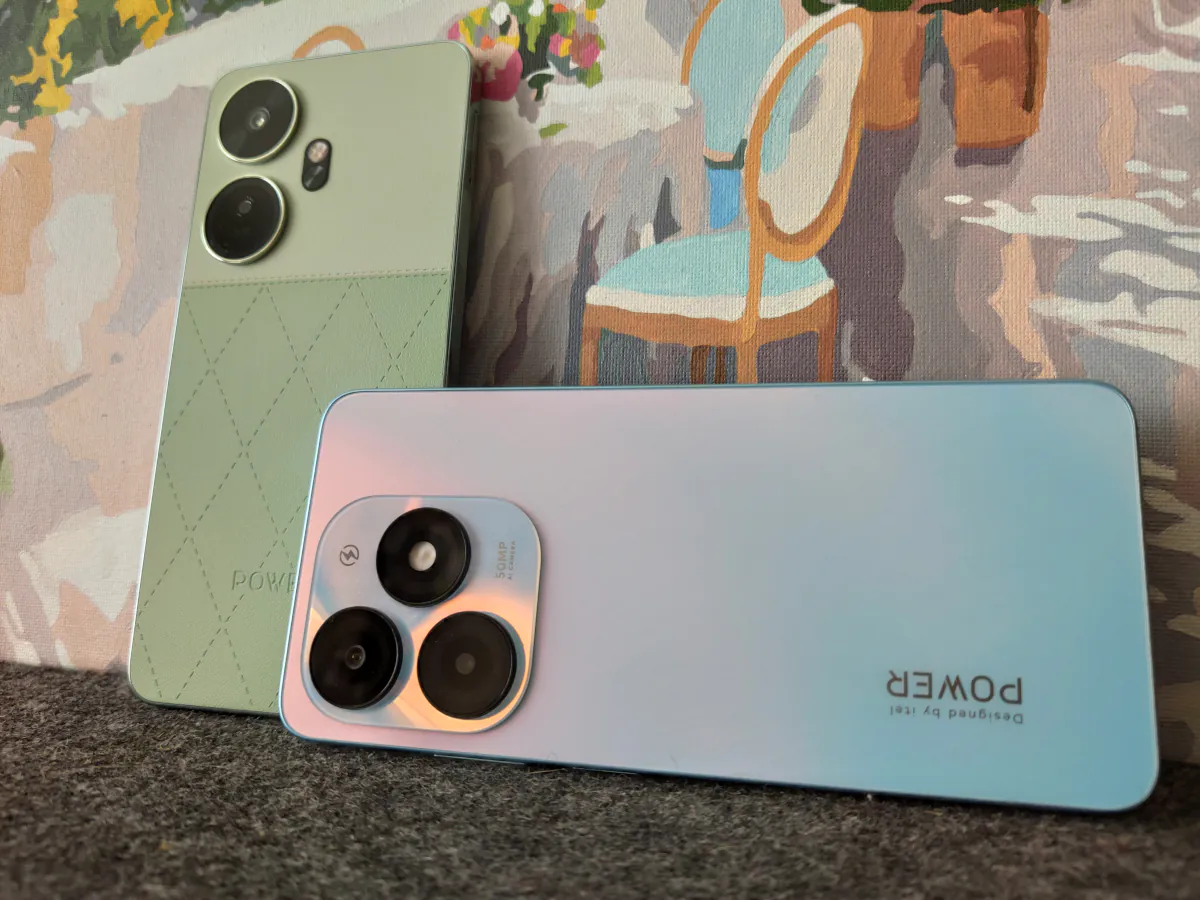
Both smartphones have a single multimedia speaker, so the sound is mono. It’s quite decent for watching videos, playing games, or taking calls, but for music, it’s better to use headphones. You can use both Bluetooth and wired headphones since there’s a 3.5mm audio jack available.
Cameras
In both cases, we have the same camera setup. The rear camera consists of a 50 MP main sensor (capable of recording Full HD video at 30 fps) with an additional sensor, while the front camera features an 8 MP sensor with a flash.
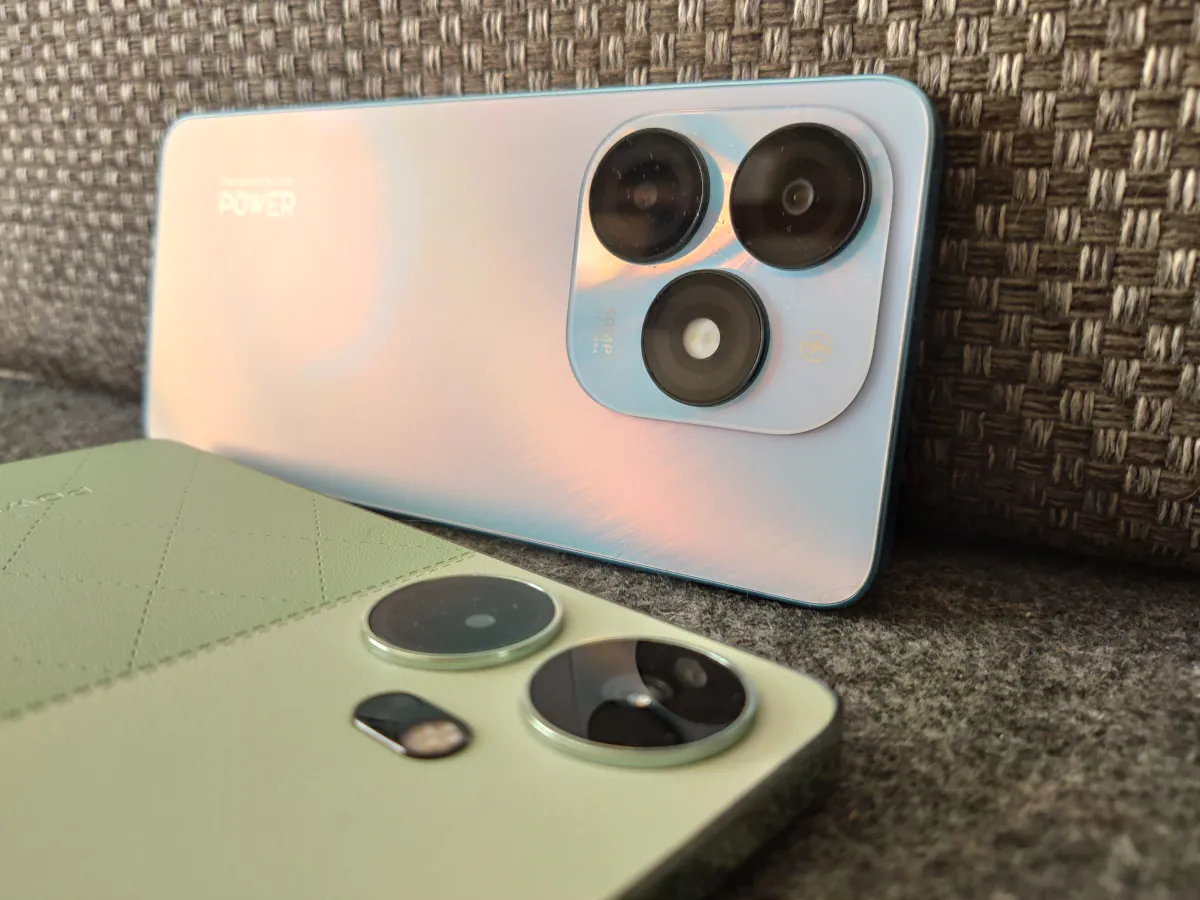
The camera app offers the following shooting modes:
- For photos: “Photo,” “Beauty,” “Portrait,” “Super Night,” “Ultra HD” (50 MP), “Professional,” “AR” (adding masks and objects to photos), “Panorama”;
- For videos: “Short Video,” “Video,” “Slow Motion”.
They also haven’t forgotten about the built-in Google Lens, HDR mode, AI, and filters.
What can be said about how the budget newcomers from Itel capture photos? It’s worth noting that all modes, except for Ultra HD, capture images with a resolution of 13 MP – the smartphones use Quad Pixel 4-in-1 technology. With some skill during daytime shooting, you can get quite good shots – with decent detail and focus on the object you need at the moment (foreground or background). The only caveat is that the smartphones take quite some time to focus, and sometimes, it takes patience to get a beautiful shot.
Regarding nighttime photography, it’s clear that this is not a strong suit of the smartphones. When shooting in standard mode in low light conditions, the camera struggles to focus, resulting in blurry, unclear, or overexposed shots where the light source appears as a spot on a dark background. Slightly improving the result is the night mode. Thanks to a series of shots that are then stitched together programmatically, the photos gain detail and reduce contrast. However, even in this case, it’s unlikely to get shots that will be impressive. The verdict is obvious – the cameras are useful for shooting in good daylight conditions, but they are not suitable for decent nighttime photography.
Since the cameras are absolutely identical, I suggest taking a look at the shots taken with the Itel P55+. All daytime shots were taken in standard mode, while nighttime shots were taken in “Super Night” mode.
FULL SIZE PHOTO FROM ITEL P55+
As for the front camera, I would say it’s a pretty decent option for video calls, but capturing worthy selfies with it is not easy. The basic shooting modes produce a fairly sharp image, emphasizing any shadows on the face or even the smallest nuances on the skin. You can use the “Beauty” mode, but it slightly blurs the image, resulting in a loss of sharpness. Unfortunately, in insufficient lighting, the flash doesn’t help much since it can’t provide even illumination, only local, which doesn’t allow for beautiful shots. However, this is quite expected for smartphones with a price tag just above $100.
Read alsо:
Battery life
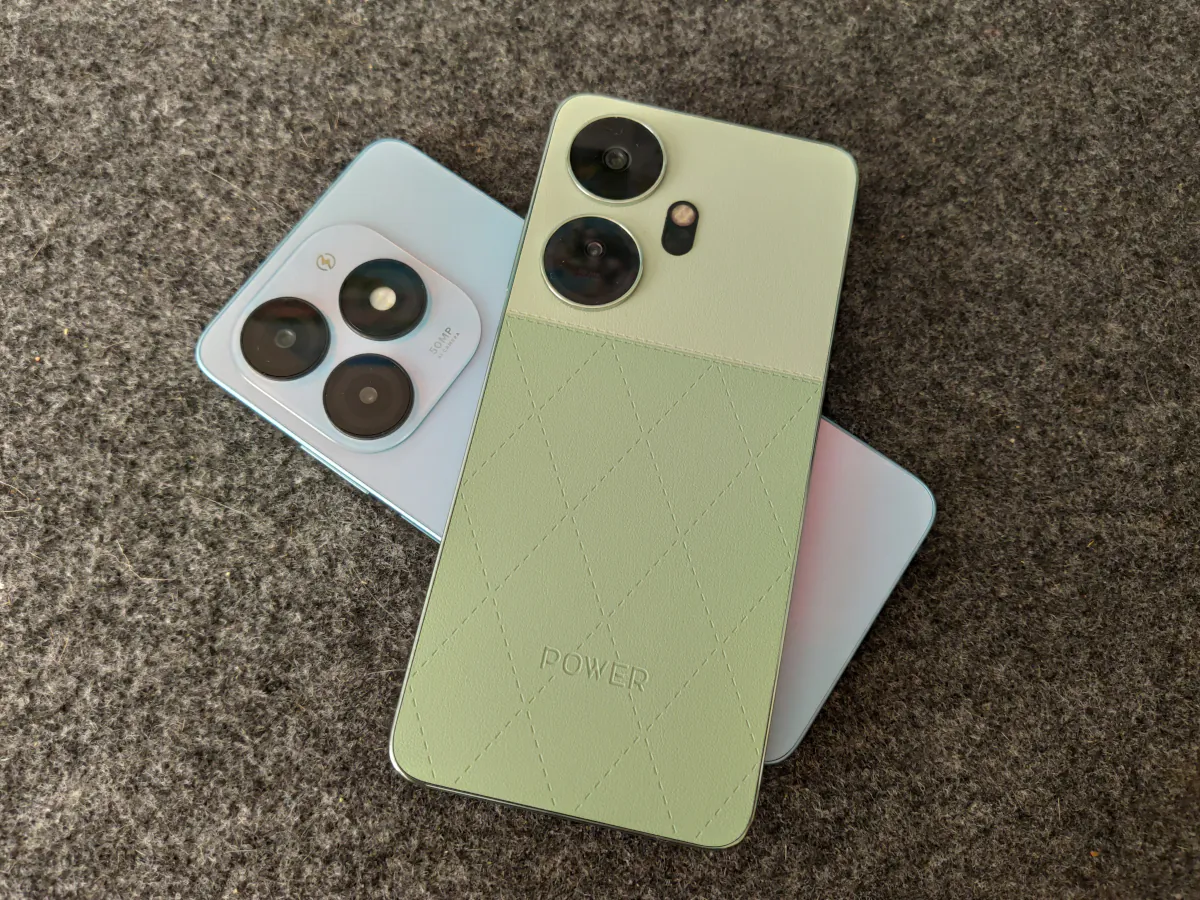
The smartphones have the same battery capacity (5000 mAh), but there are differences in charging power. The Itel P55 has an 18W charger, while the Itel P55+ has a 45W charger. So, the “plus” version will charge quite quickly. As the manufacturer claims, you can get 65% charge in 30 minutes, and to reach 100%, you need to wait for 1 hour and 15 minutes.
When it comes to battery life, this pair pleasantly surprised me. Under the same conditions (only Wi-Fi enabled, brightness level at 35-40%), in the PCMark test, the Itel P55+ lasted for 18 hours and 42 minutes, while the P55 lasted for almost 20 hours! Yes, the numbers differ slightly, but insignificantly. Nevertheless, with moderate usage, neither of them will have any trouble lasting for two days on a single charge. And that’s without using any power-saving modes.
Conclusions and competitors of Itel P55 and P55+
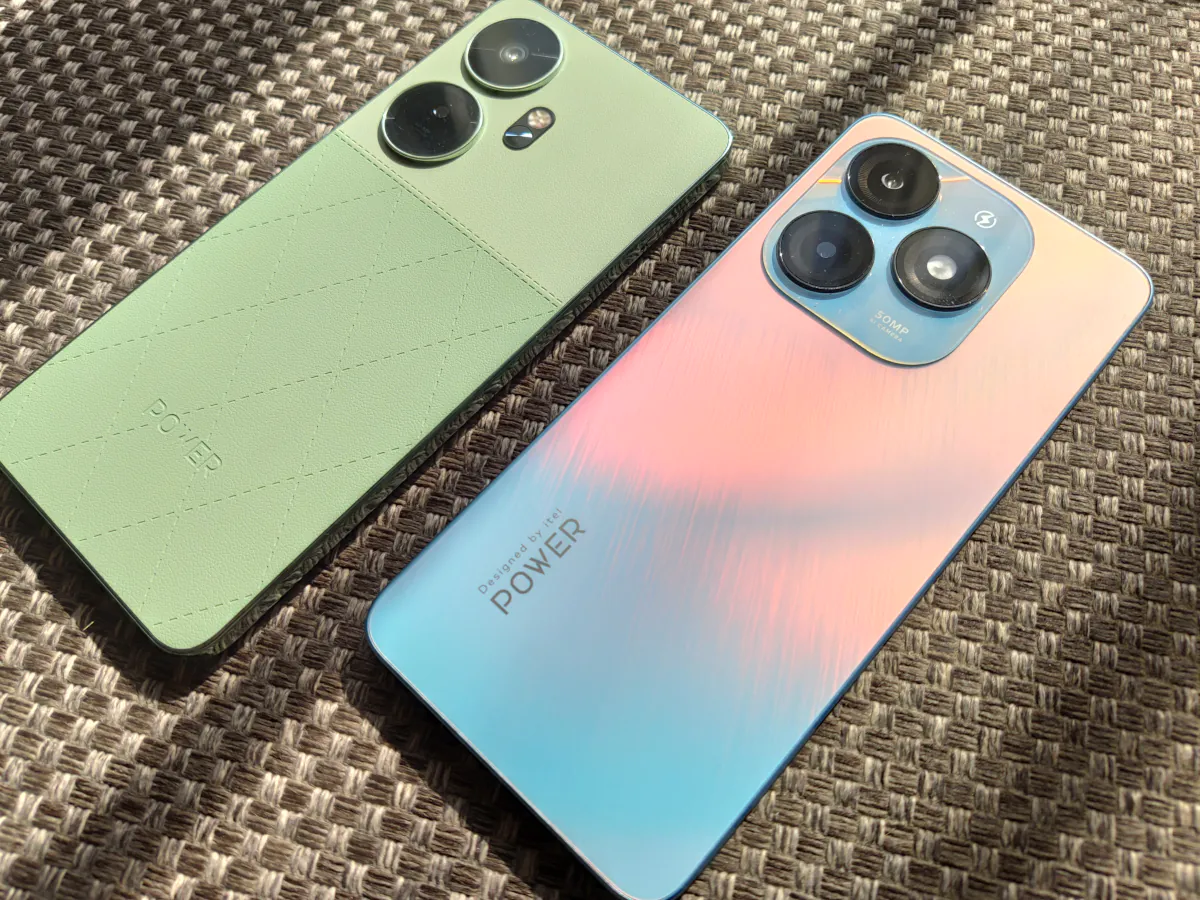
In my opinion, both the Itel P55 and Itel P55+ are quite impressive devices in the segment of smartphones priced under $150. With mostly similar specifications, they boast pleasant performance for daily tasks, decent memory capacity (both RAM and storage), good screens with 90 Hz refresh rates, excellent packaging, modern and attractive designs, and impressive battery life. However, I would still opt for the P55+ version. Firstly, it seems to me that it looks more stylish, and secondly, a 45W charger is a 45W charger. And $10 is not the kind of amount that would make you think twice.
The drawbacks are quite typical for their class. I can highlight only imperfect translation of the interface into Ukrainian, low-quality photos in low light conditions, and it would be nice to have a Full HD screen. However, considering the overall impression, it’s not that significant for smartphones priced just above $100.
And who competes with Itel P55 and P55+? In the ultra-budget device segment, there are quite a few players, so Itel won’t have it easy for sure.
Let’s start with the popular Xiaomi, namely the Redmi 13C, which is priced slightly higher at $150. It has a slightly more powerful processor, the Helio G85, with speeds up to 2.2 GHz, a macro shooting module, and Bluetooth 5.3, but with a combined slot. Otherwise, it’s similar to the Itel P55+, including the design.
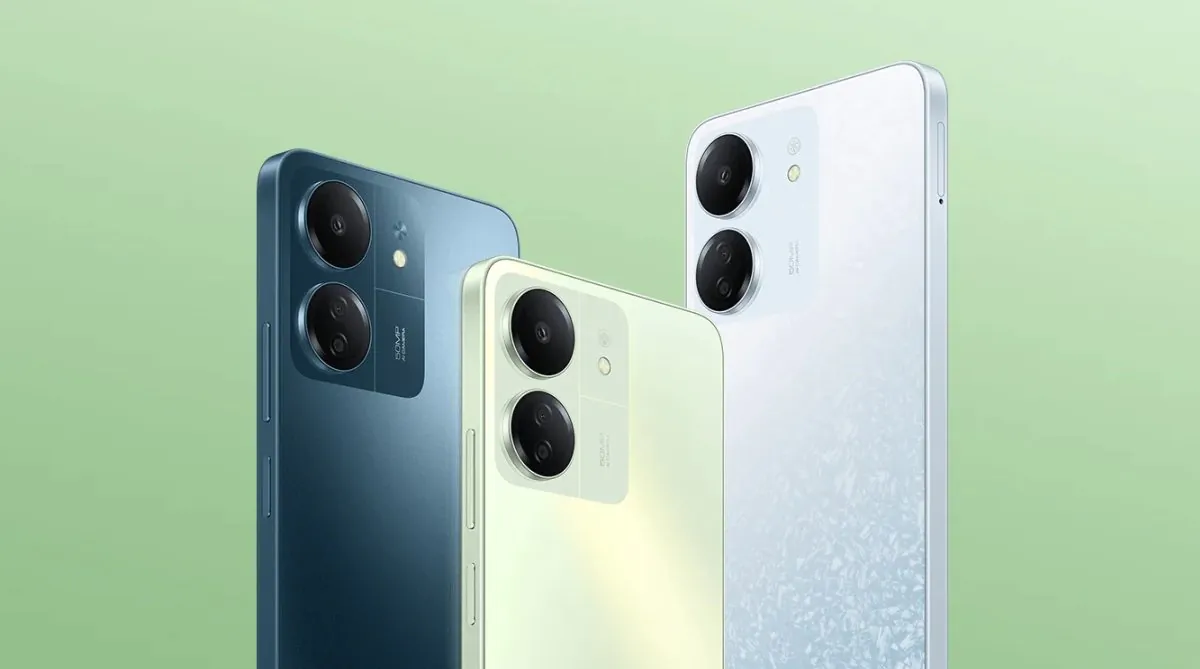
Incidentally, the Poco C65 also has almost identical parameters to the Redmi 13C.
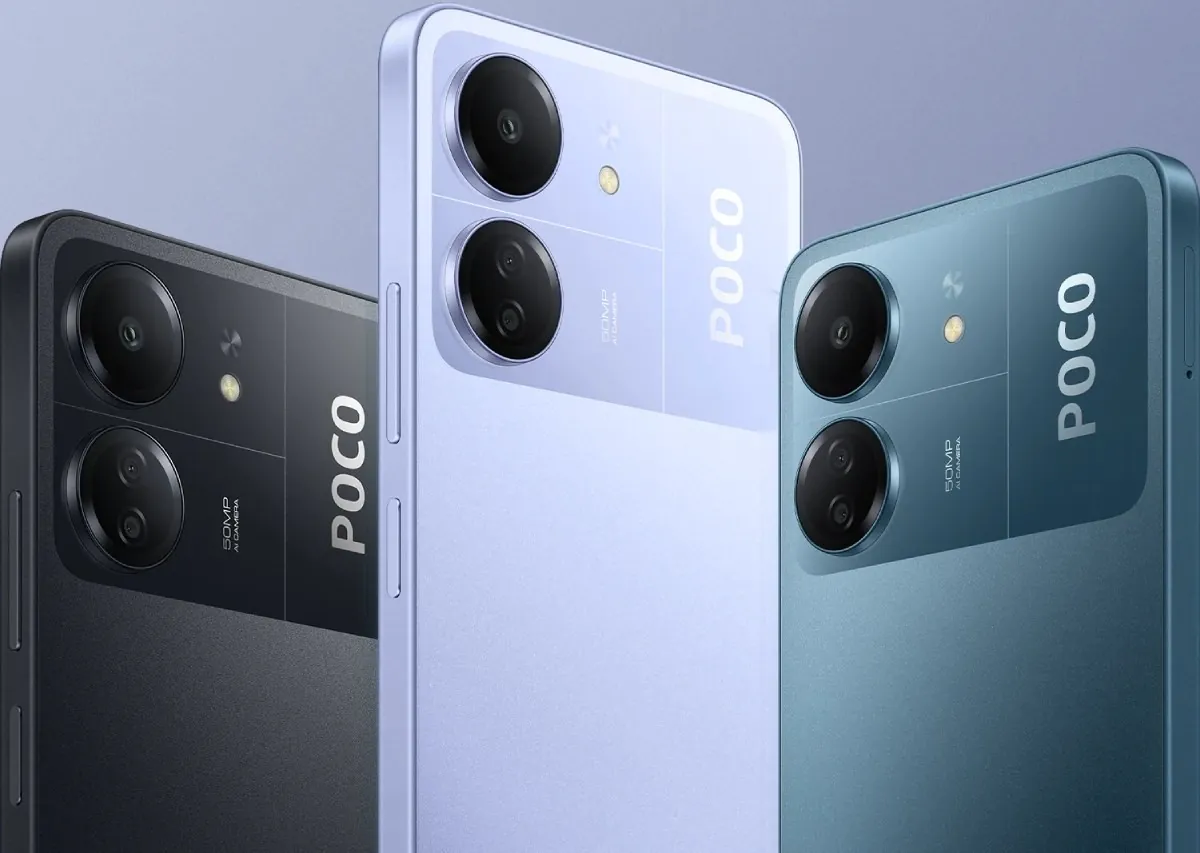
Let’s also take a look at the Motorola Moto G14. Priced similarly to the Itel P55, it features a Full HD+ display, a Tiger T616 processor (up to 2 GHz), and IP52 dust and splash protection.
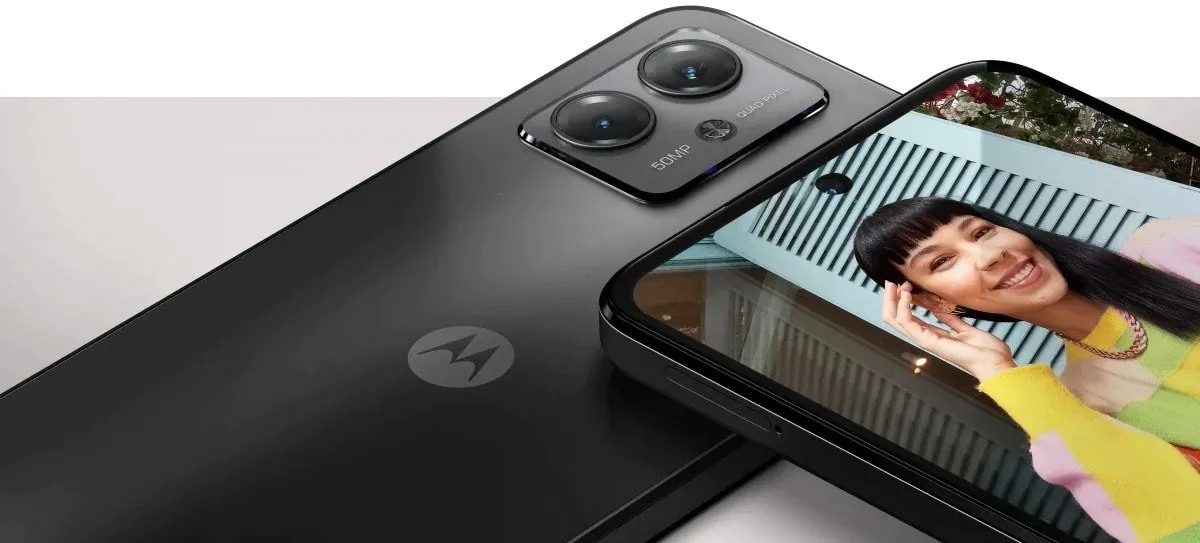
The Infinix Hot 40, priced at $150, also features a Full HD display, stereo speakers, and a 32 MP selfie camera with flash.
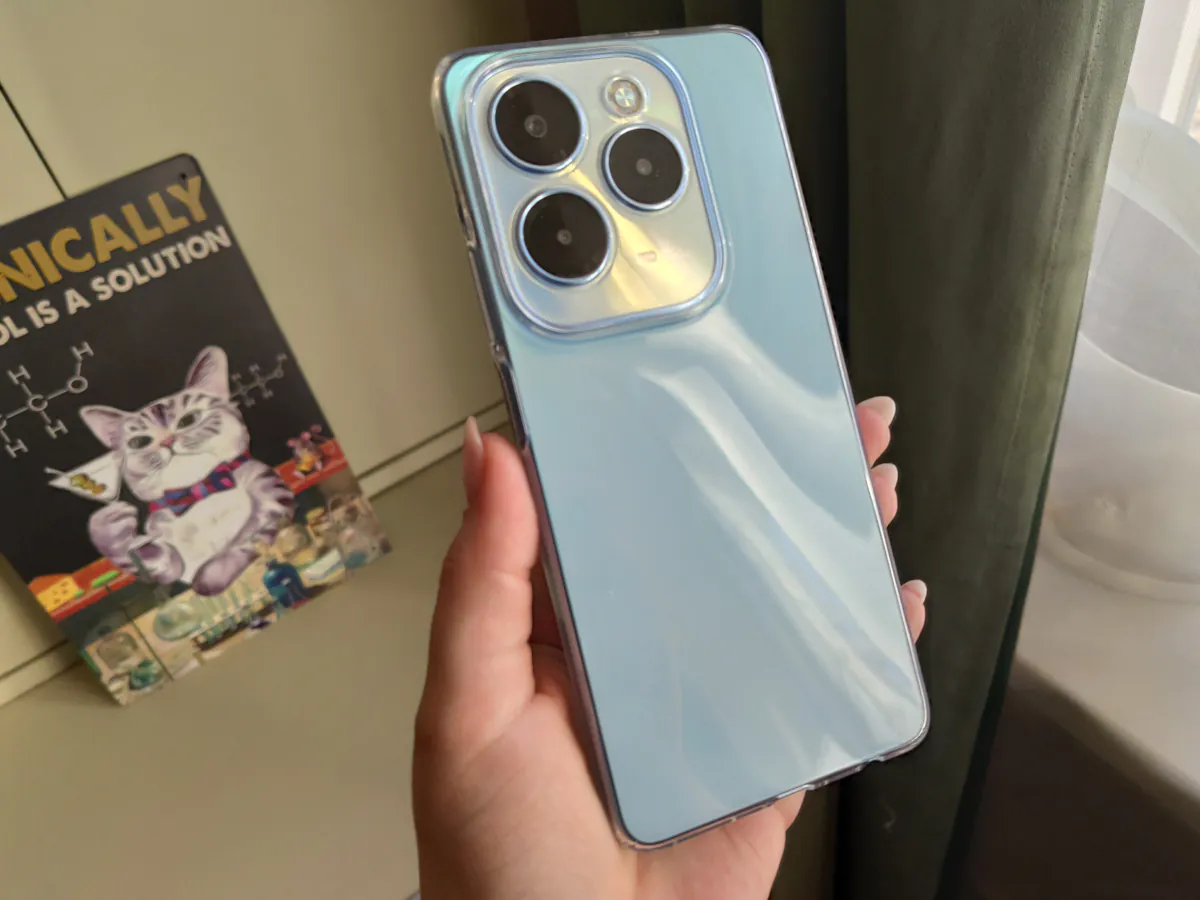
Read alsо:
- Cubot KingKong AX Rugged Smartphone Review: Sturdy Yet Elegant
- realme 12 Pro Review: All About the Cameras
Where to buy
AliExpress:


